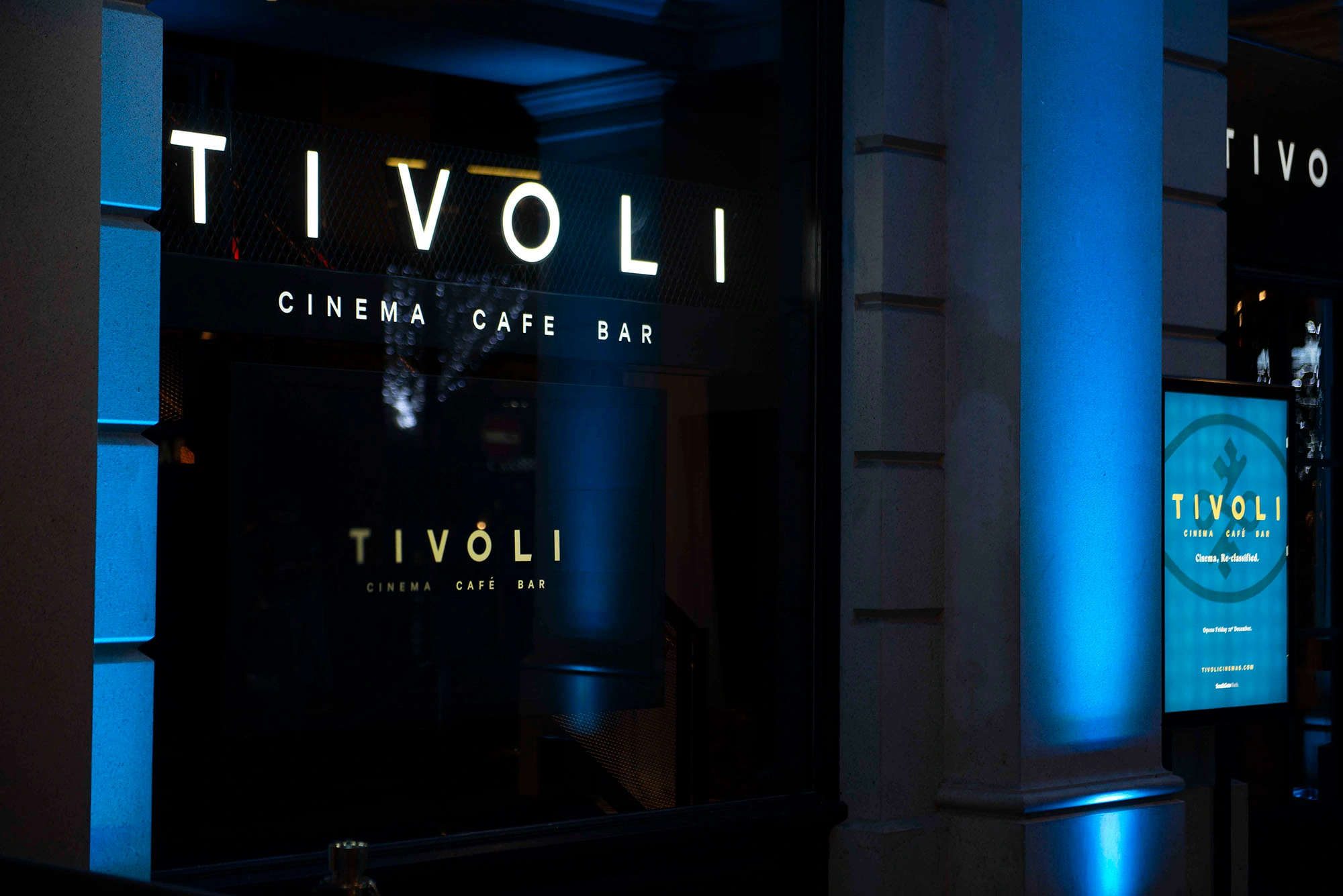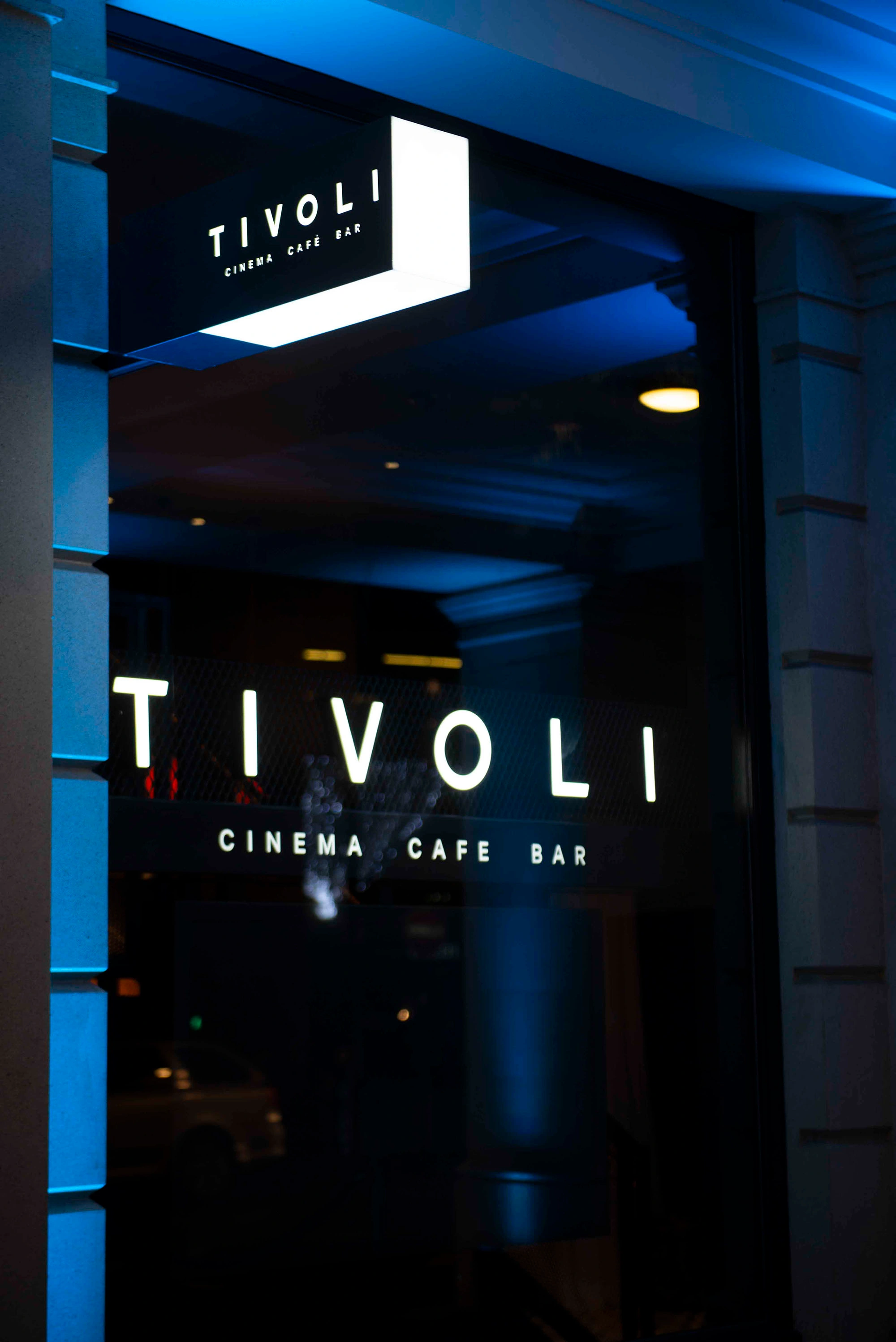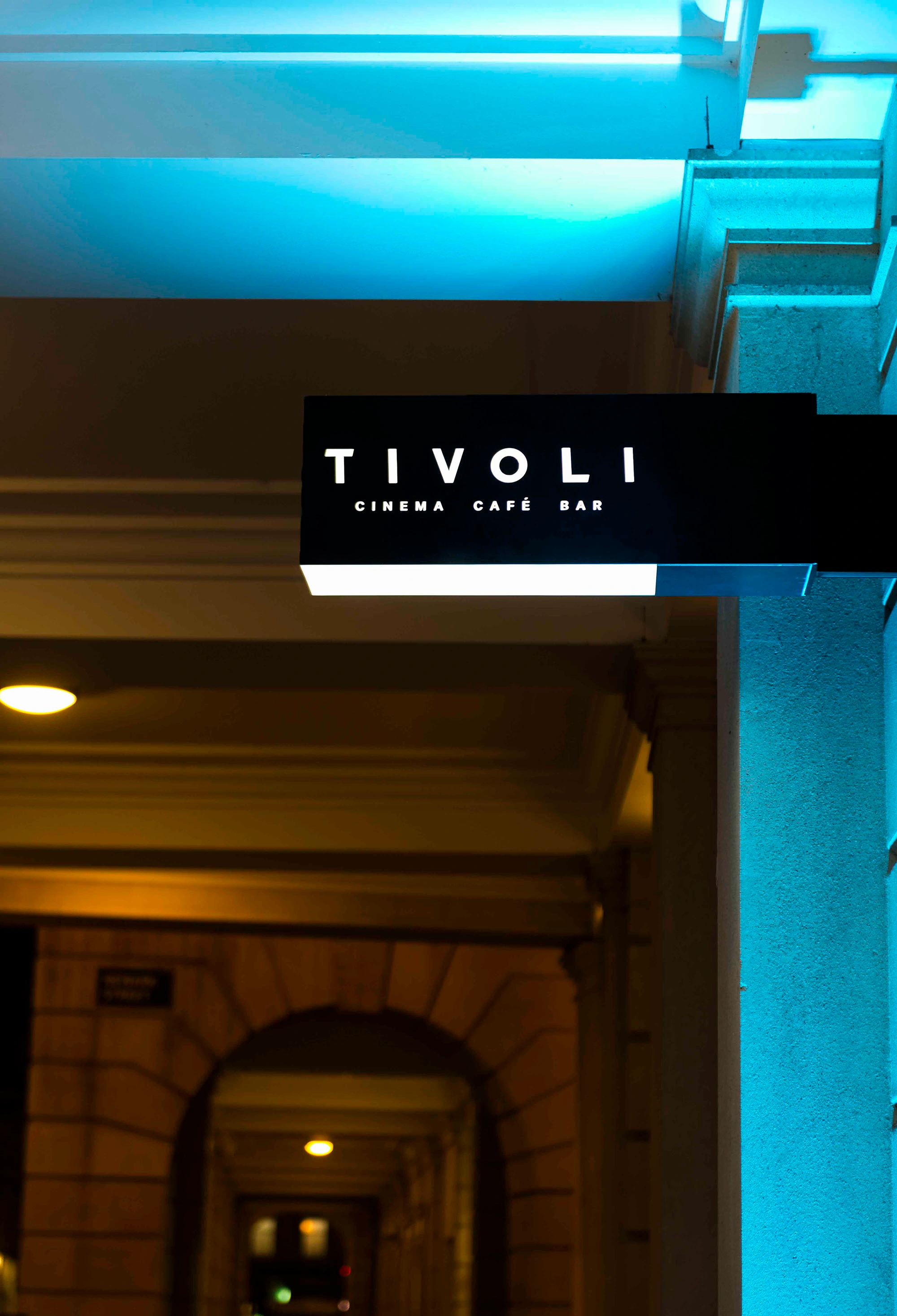tivoli cinema
cinema, re-classified
Tivoli is a new breed of boutique cinema — a premium screening destination that doubles as a stylish social and dining hotspot. A dream brief for a multi-disciplinary studio like ours, it brought both sides of our practice together: interiors crafting the spatial design and styling, while graphics created the brand identity, in-venue artwork, animated idents and launch campaign.
Recognition:









BUILDING A BRAND
We love breathing new life into established brands, but there’s something especially exciting about building one from scratch. Giving life to something unique and original. After our research and familiarisation stage, we get stuck into the logotype, which evolves over numerous iterations, crafted and tweaked until perfect.
The chosen logo has a subtle quirk — a gentle lean to the left — which gave it an offbeat elegance. We embraced this idiosyncrasy to create a dynamic, repeating pattern that became a versatile brand device. It weaves its way through the venue, appearing on coasters, the drinks menu, and even a bespoke carpet in each of the screening rooms.

the evolution of a logomark
Our client wanted a mark that felt enigmatic and intriguing — a motif shrouded in mystery, like a symbol for a secret members club. Something that spoke to the escapism of cinema: the way it opens doorways to other dimensions and unlocks the mind’s eye.
The final symbol became the heartbeat of the brand. It teased the launch through enigmatic marketing and now lives discreetly throughout the venue, waiting to be discovered.

We created all of Tivoli’s animated idents, which appear on screen once guests have settled into their boutique seats — cinematic moments of anticipation. The brand motif was brought to life with a cheeky animated wink, flickering subtly between trailers to build intrigue and reinforce the magic of the brand.
Sit Back, Sink In, Switch Off
The four boutique ‘studios’ are glamorous, intimate auditoria, cloaked in a rich palette of midnight blue and gold. Decorative trims and painted borders frame bold feature walls, setting a dramatic backdrop to an otherwise relaxed, indulgent atmosphere. Velvet-clad, sink-into sofas — in both two-seater and single options — are layered with block-colour and tropical-print cushions for added comfort. Each is paired with a personal side table for drinks and dining, and includes a rear shelf for stashing belongings. Front-row seats come with plush velvet and leather footstools, while inky fabric-draped walls are softly illuminated with ambient lighting and bespoke low-level table lamps. Underfoot, a bold custom carpet — designed using a pattern derived from Tivoli’s logo — completes the cinematic experience.
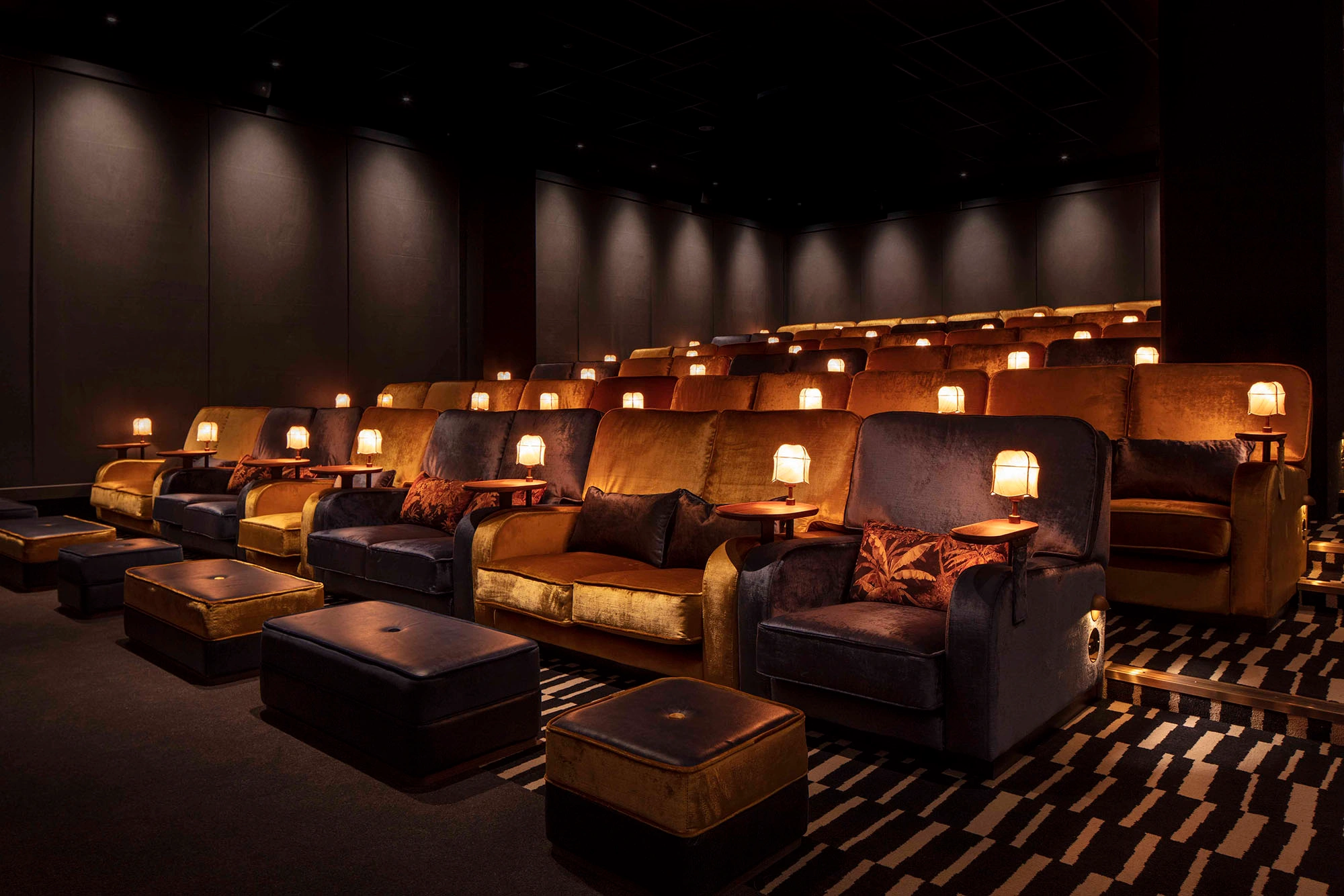
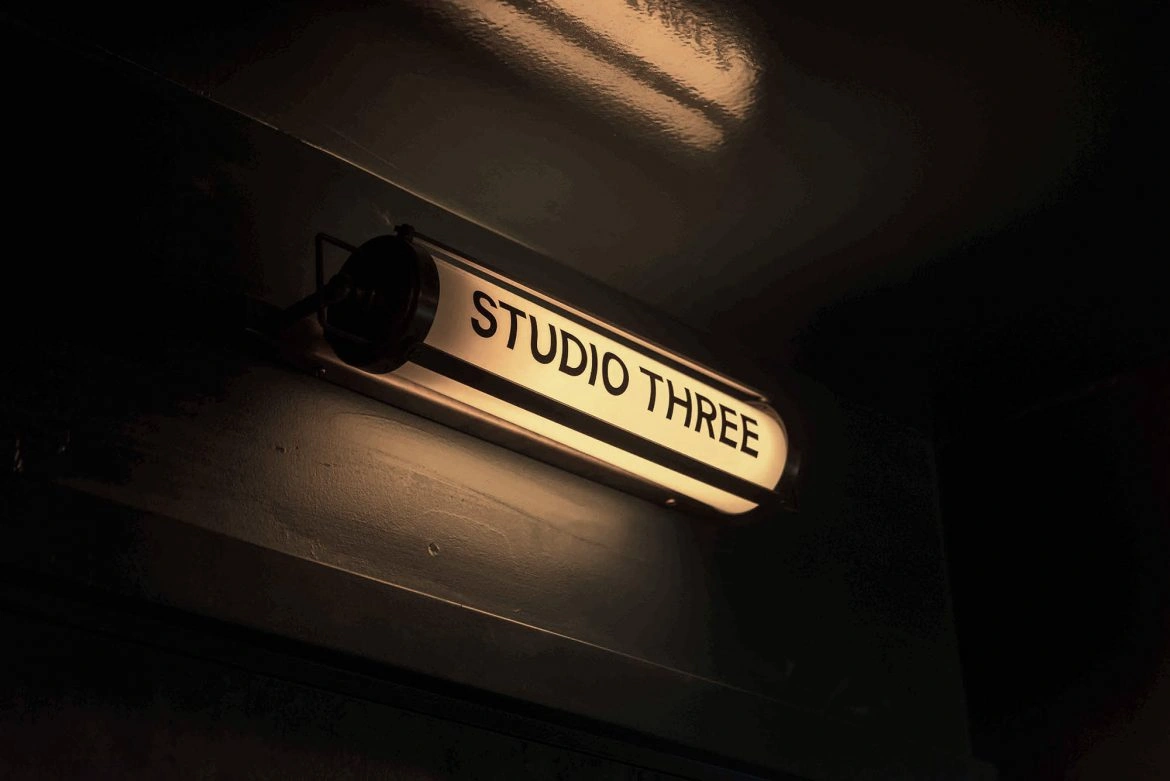
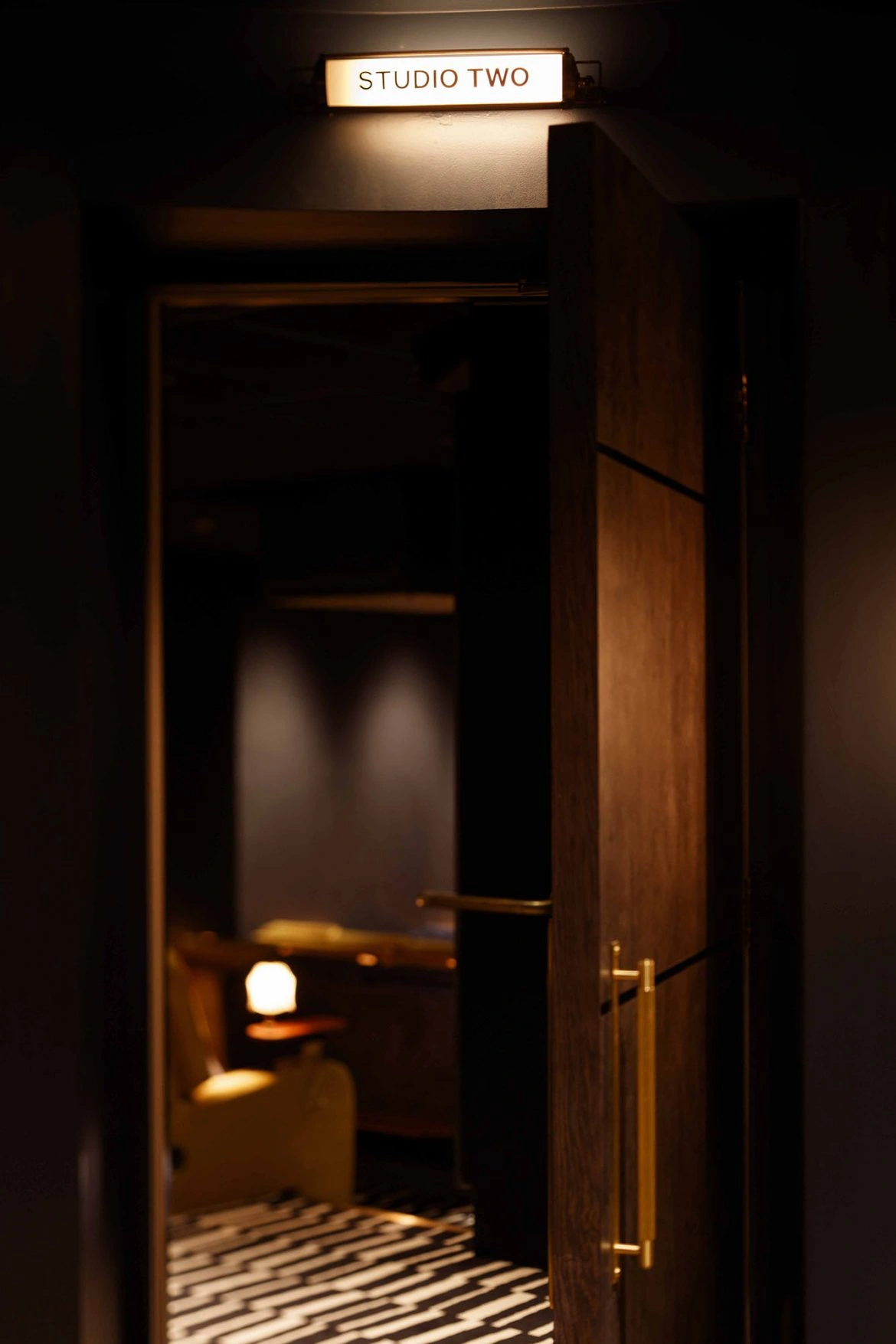
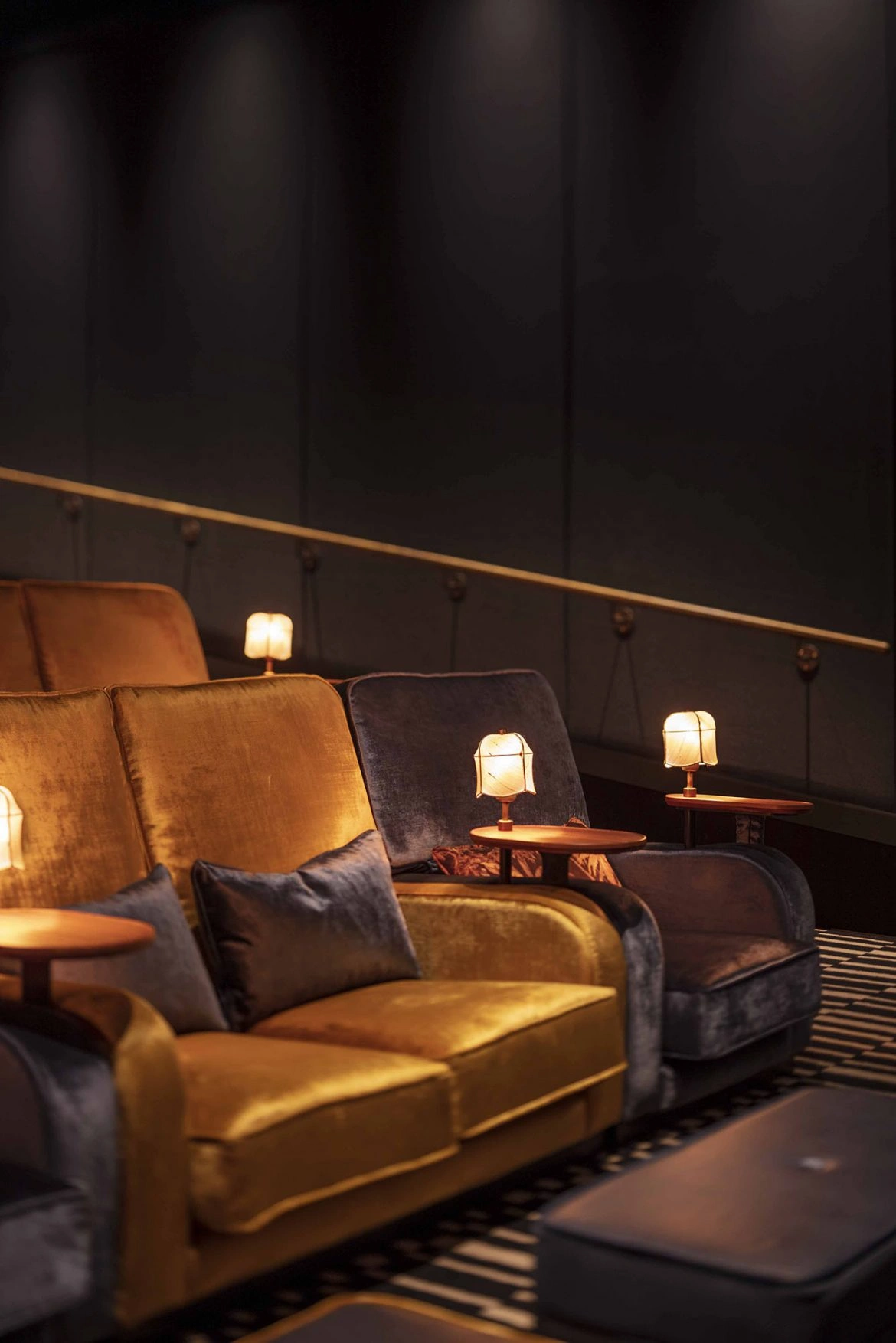
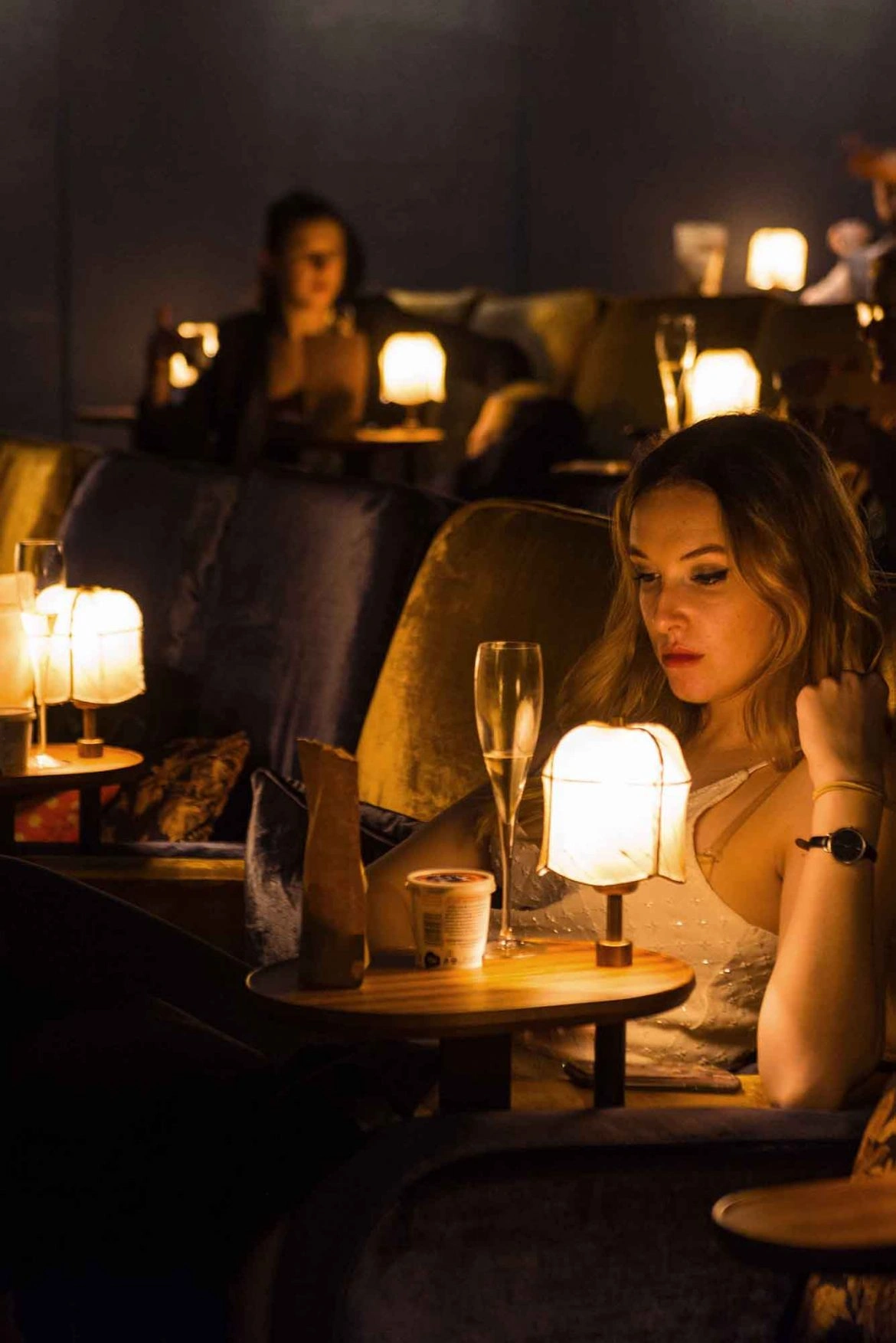
THE DIRECTOR's CUT
Tucked away for those in the know, the twelve-seater Director’s Lounge is a masterclass in cinematic luxury. With its own dedicated entrance and private hospitality foyer, it offers the ultimate in exclusivity. Inside, dark leather seating, upholstered timber panels and geometric wall fabrics create a rich, intimate atmosphere, elevated by custom brass detailing and joinery. High-end sofas are paired with matching footstools for maximum comfort, while tropical print cushions add a playful twist to the otherwise sleek, tailored palette. Guests can help themselves at the in-screen honesty bar, or relax in the adjoining lounge before the lights go down. Perfect for private hire, VIP events and elevated screenings.
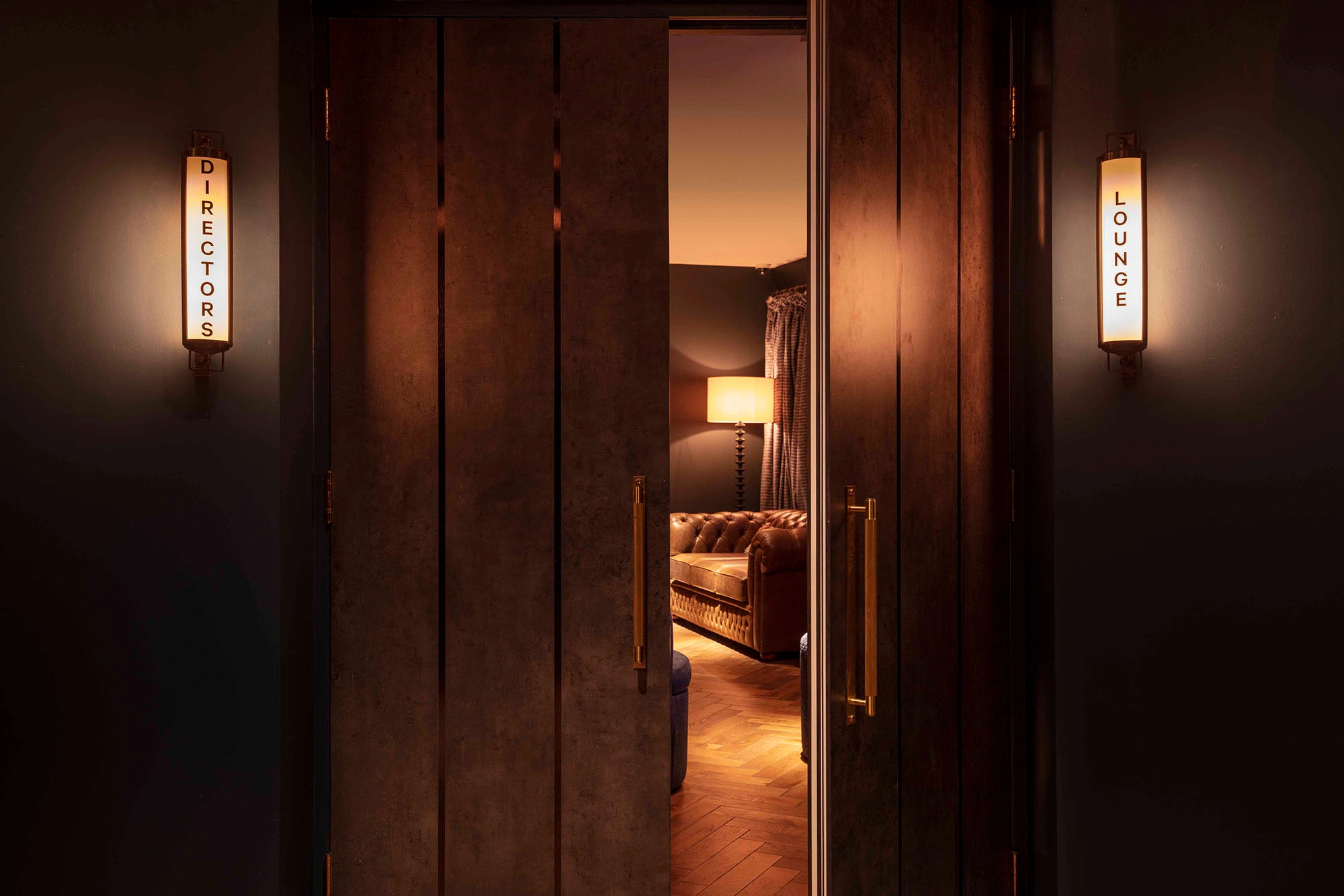
BLACK, CREAM & GOLD
We designed every single touchpoint to radiate Tivoli’s signature glamour. From the weekly printed programme and retro-inspired ticket stubs to a curated set of collectible drinks coasters. Even the gift card got the red carpet treatment — housed in a cream, black and gold wallet that feels every bit as premium as the experience itself.
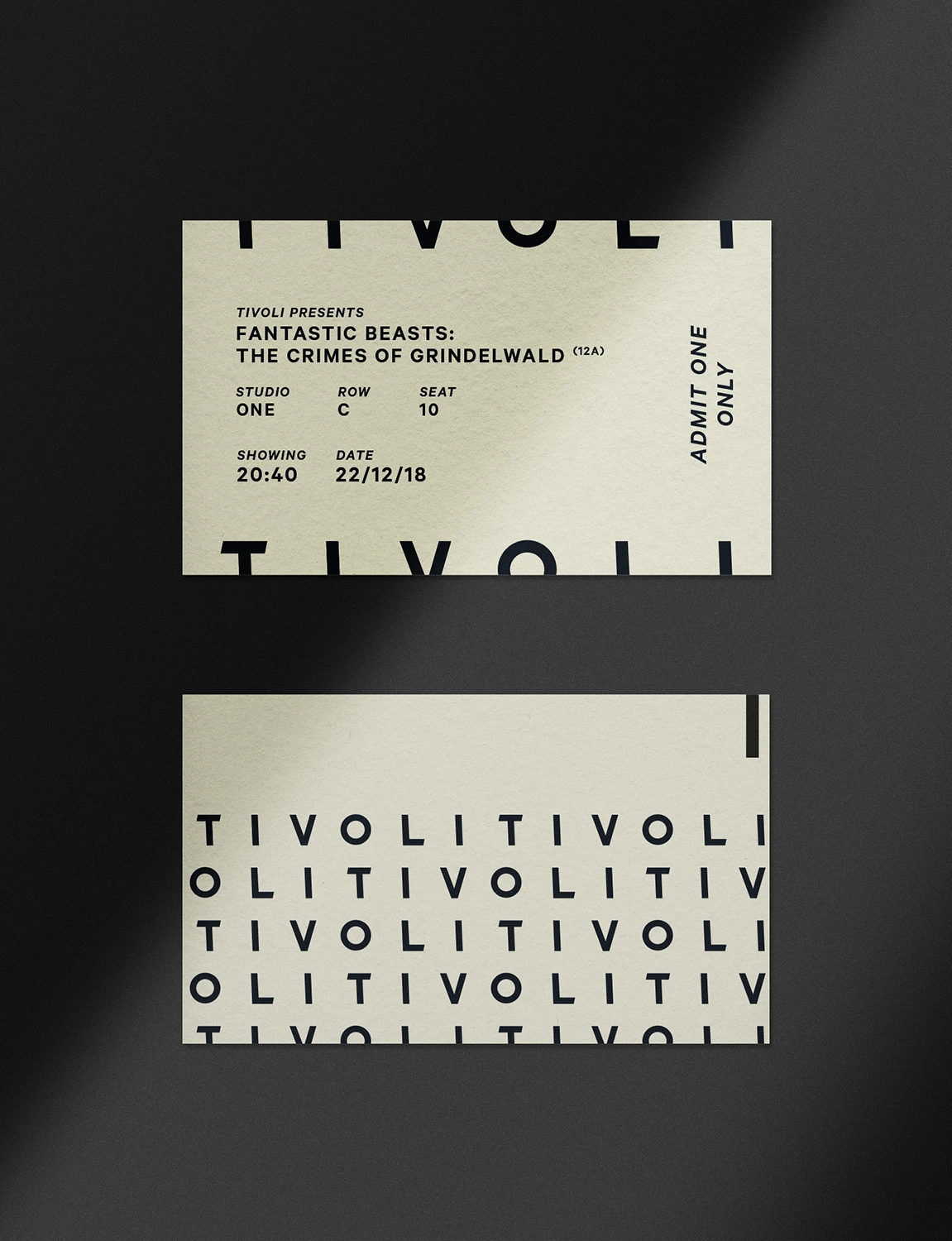
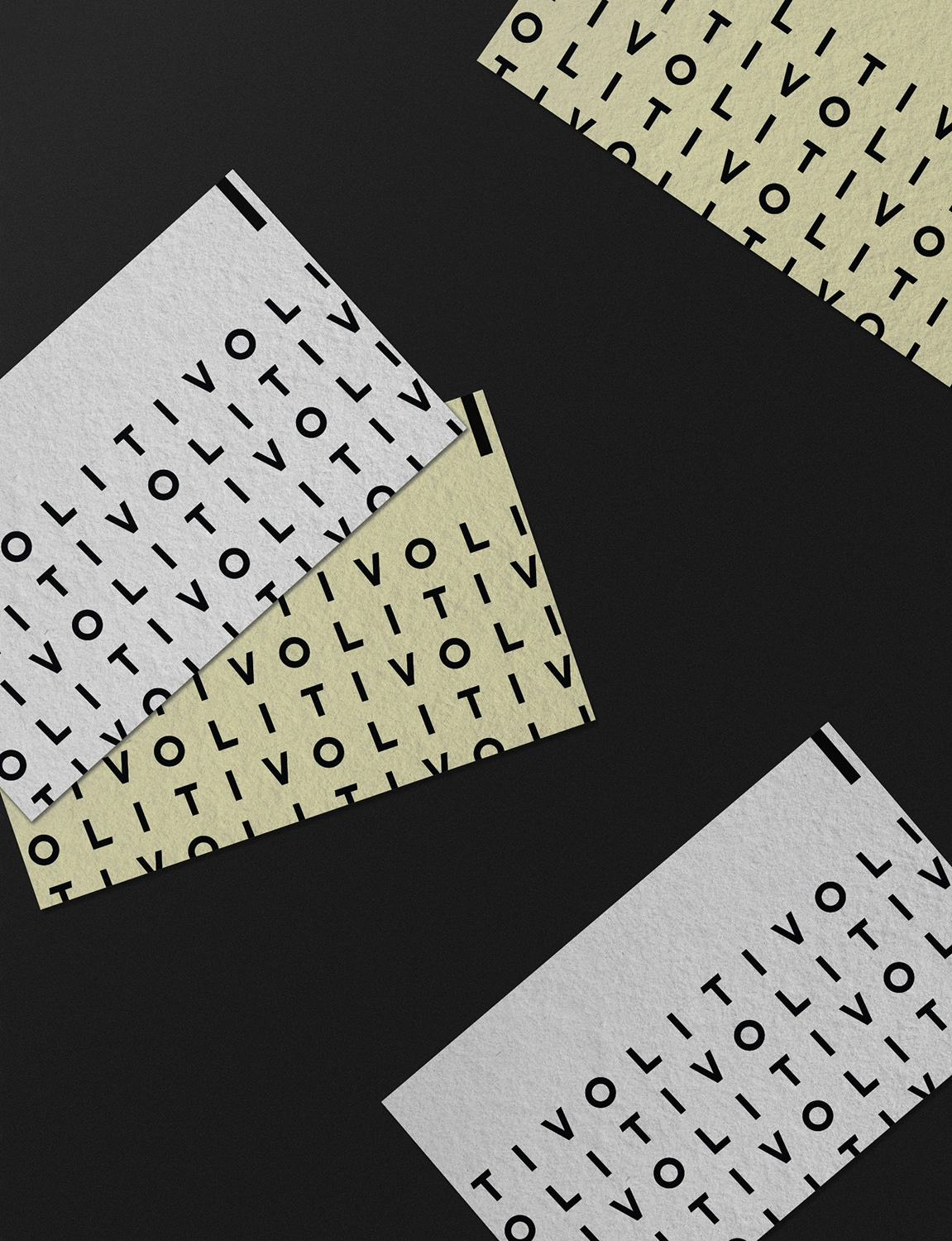
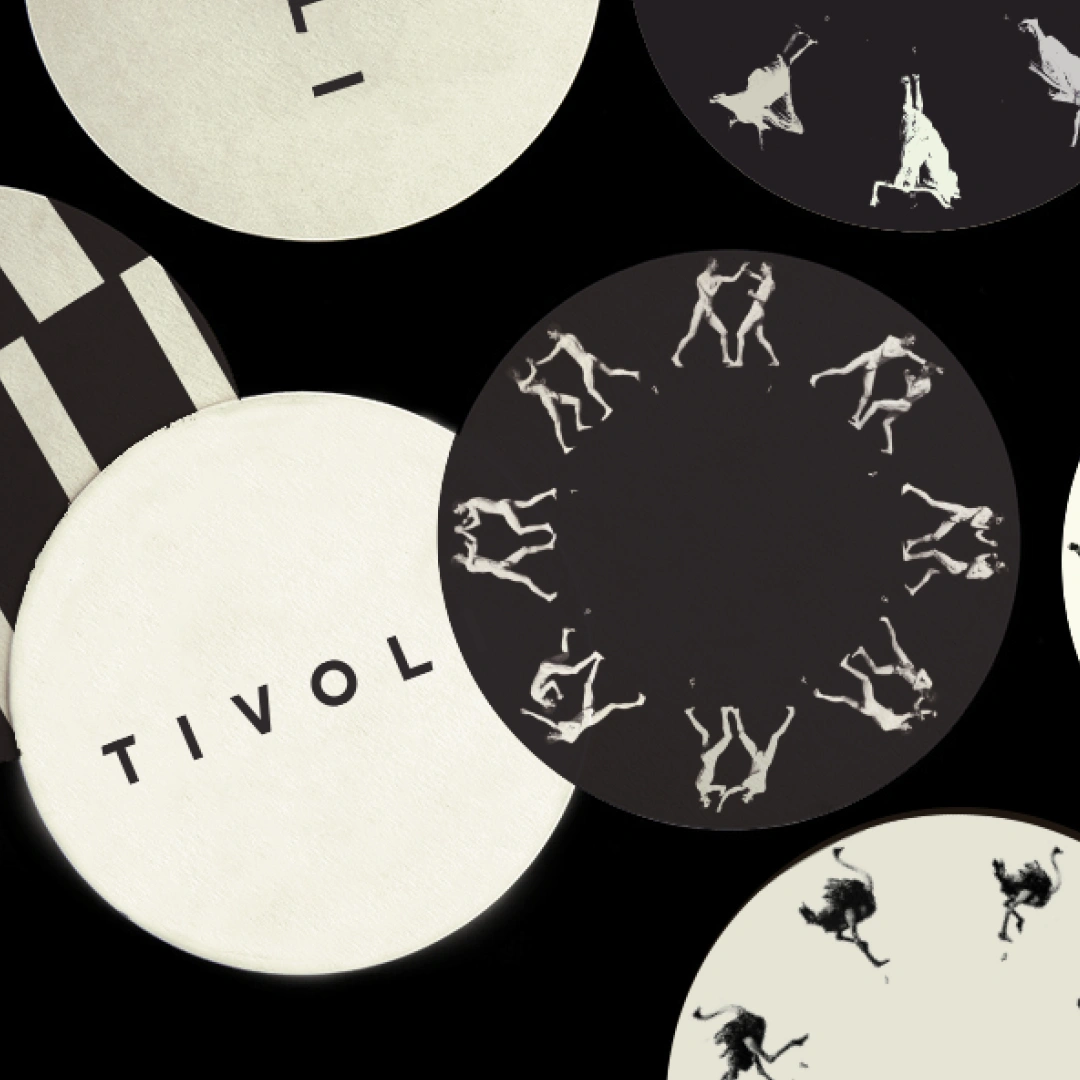
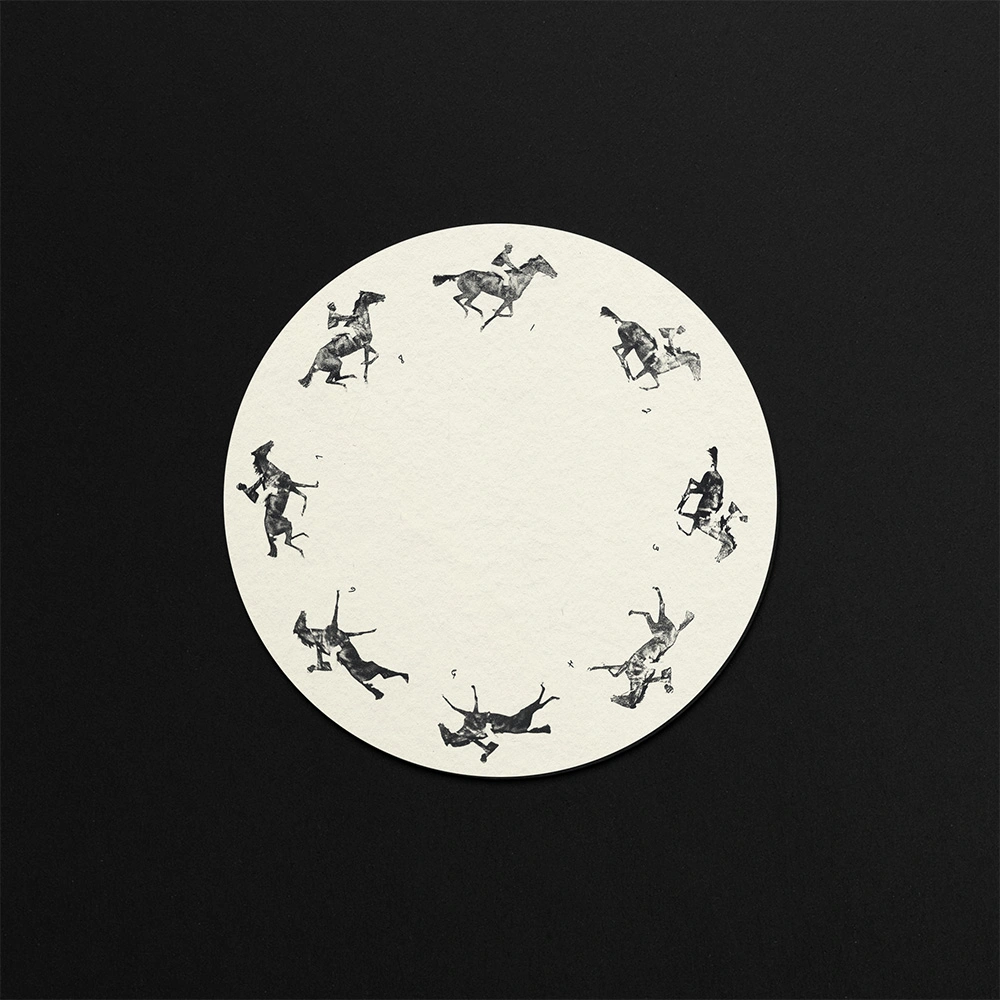

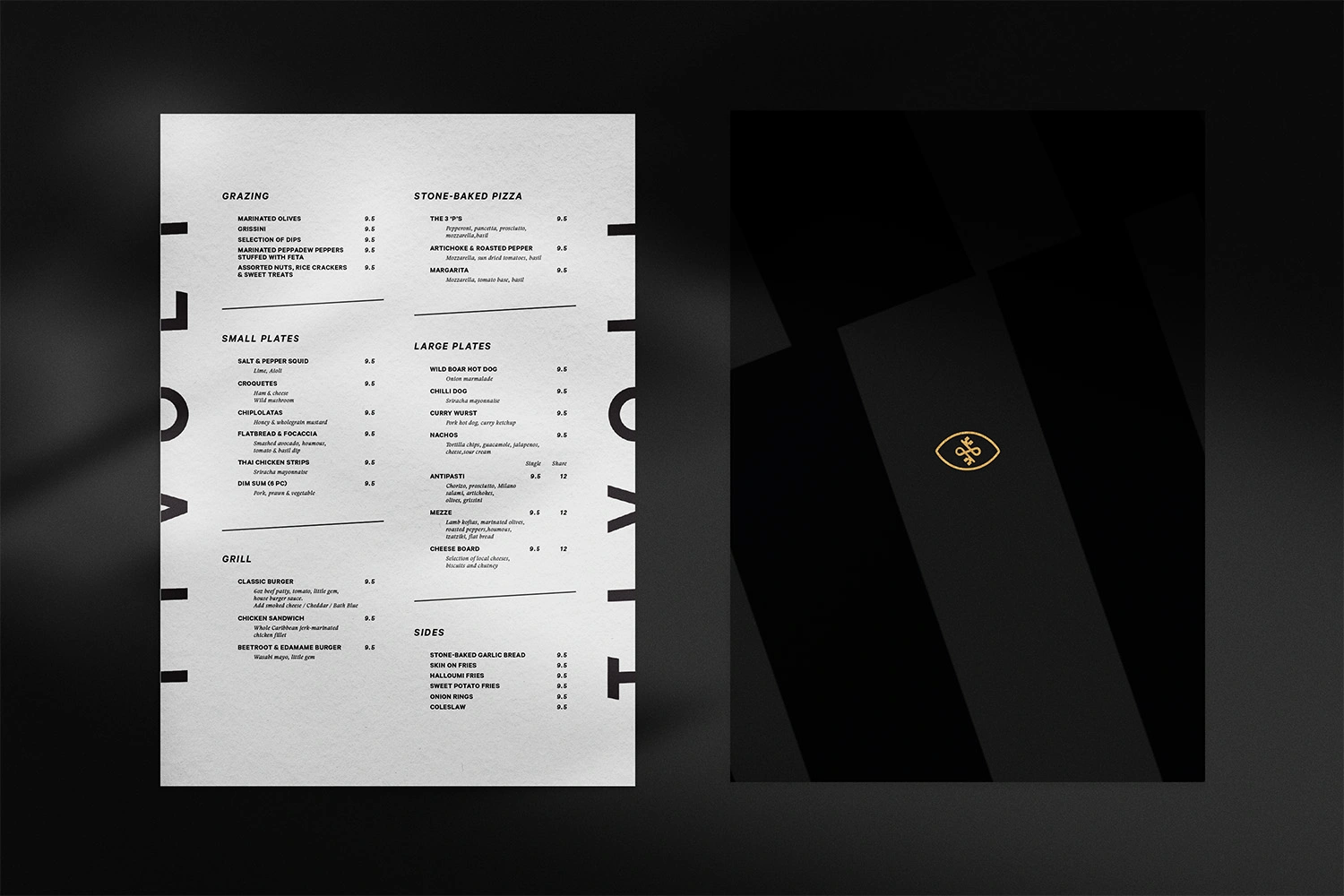
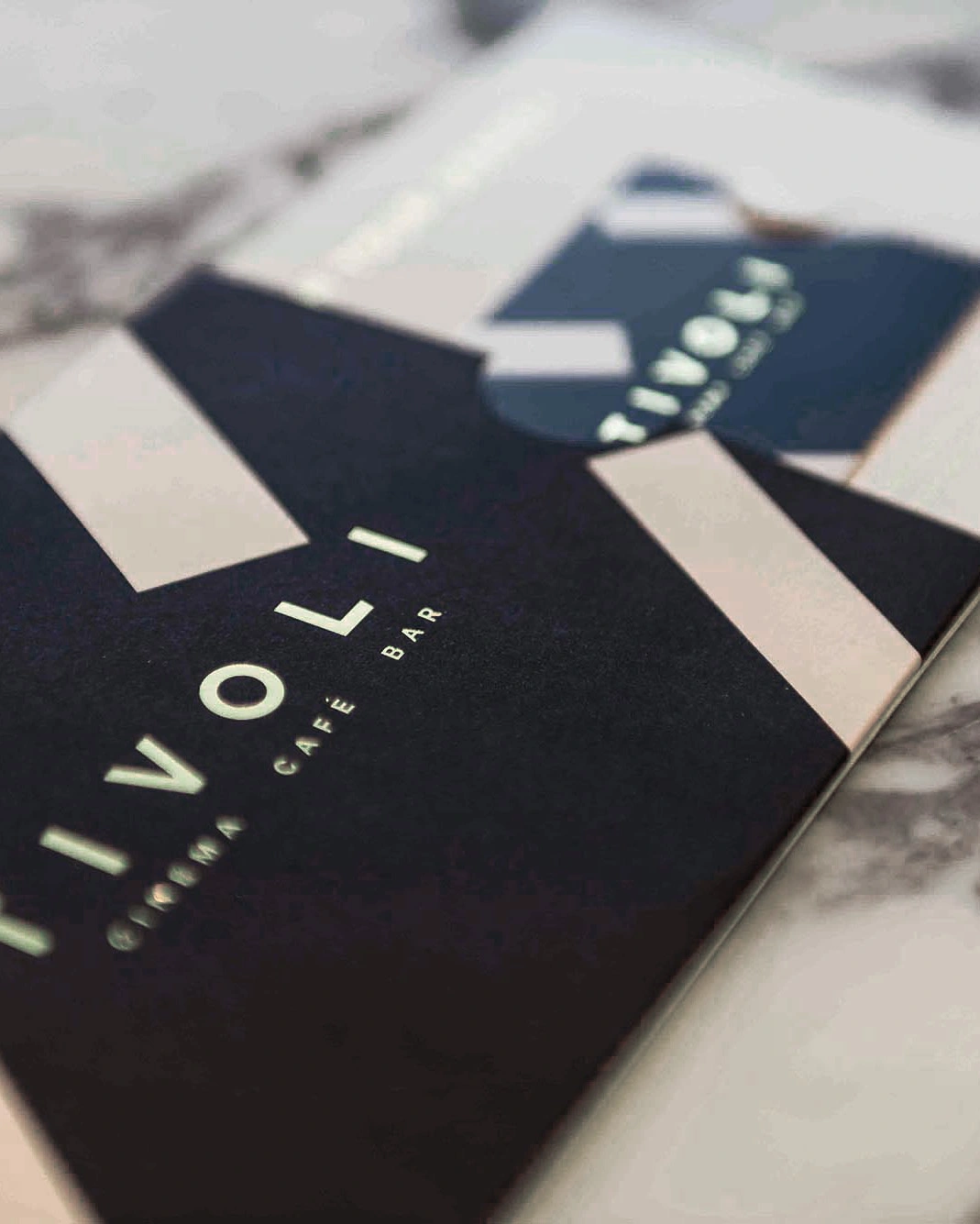
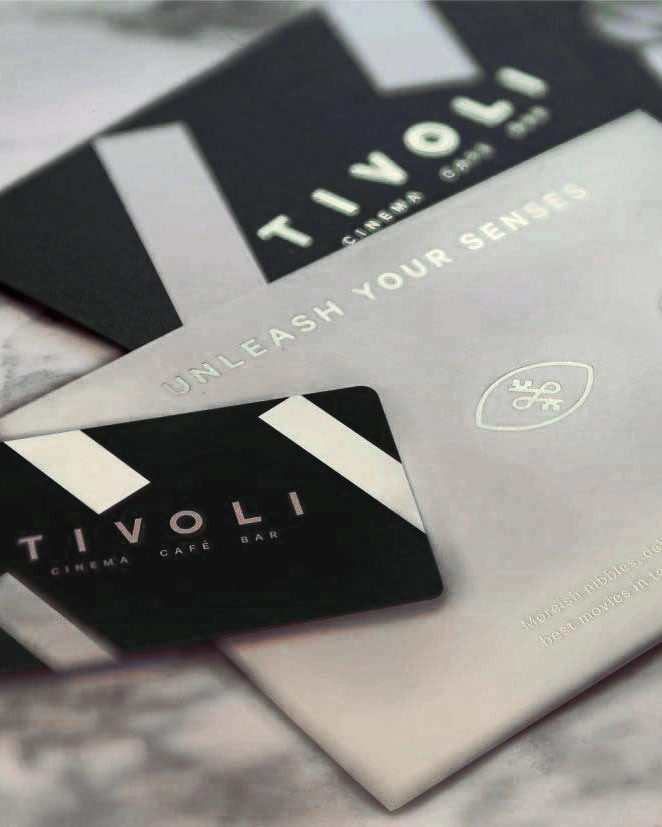
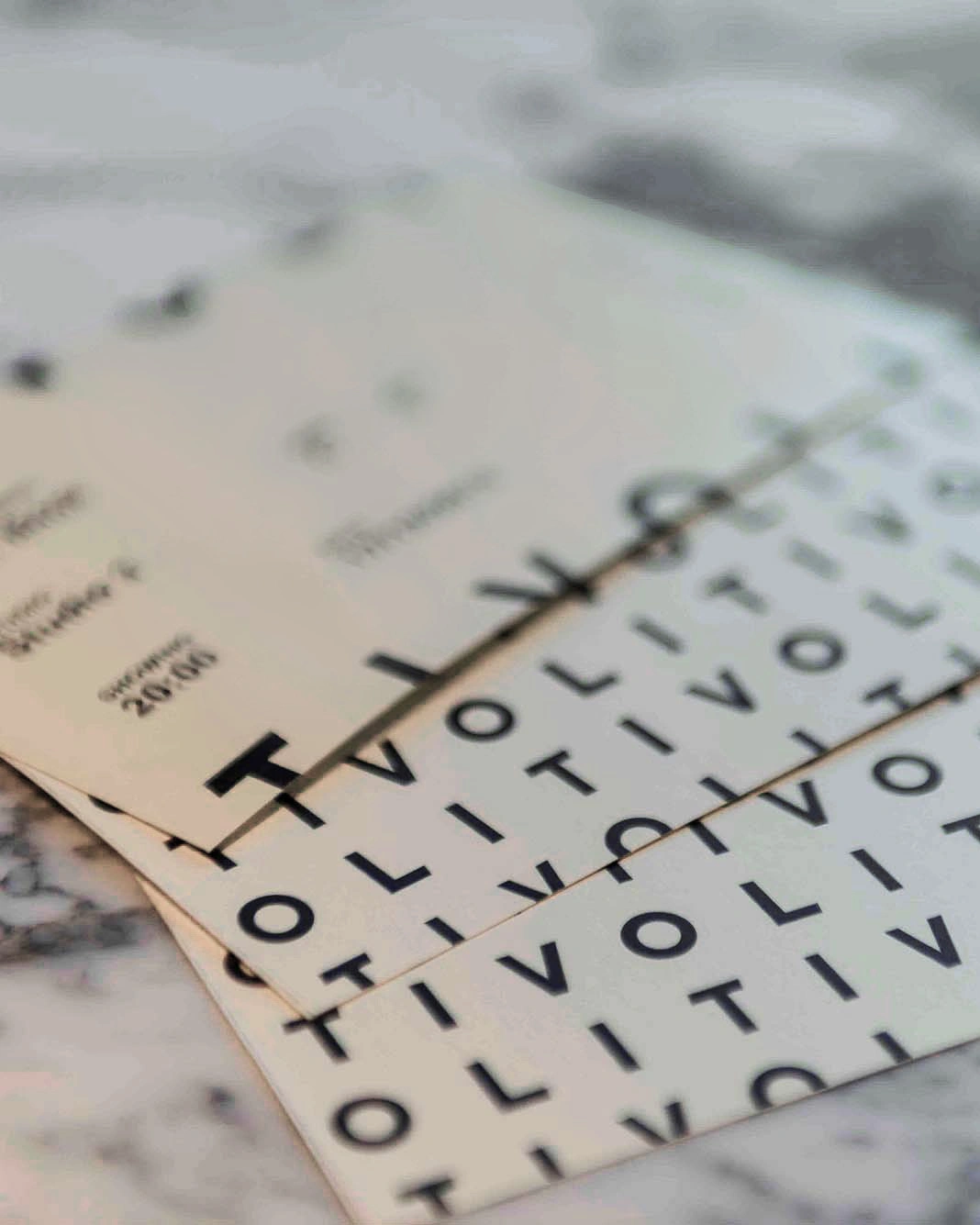
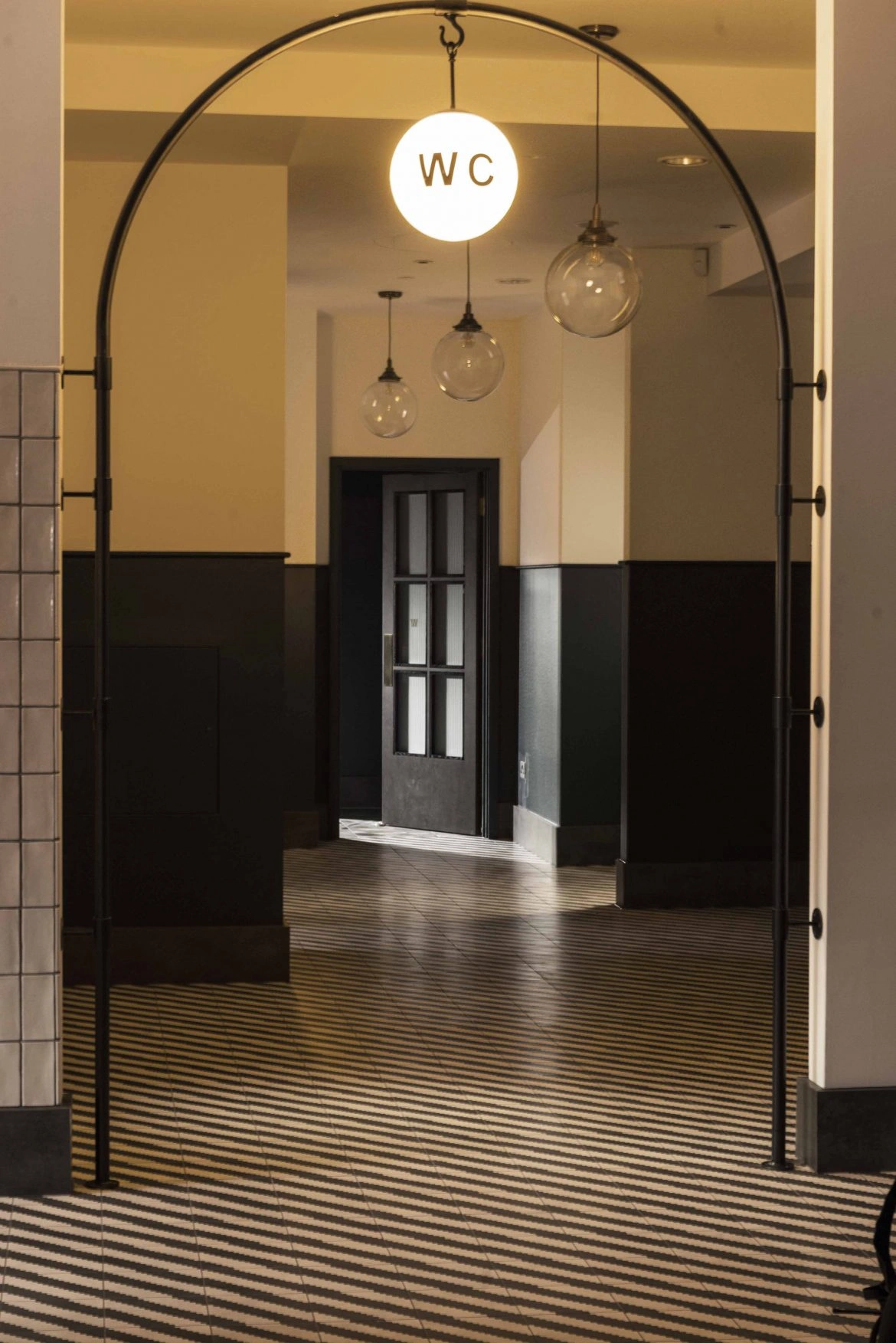
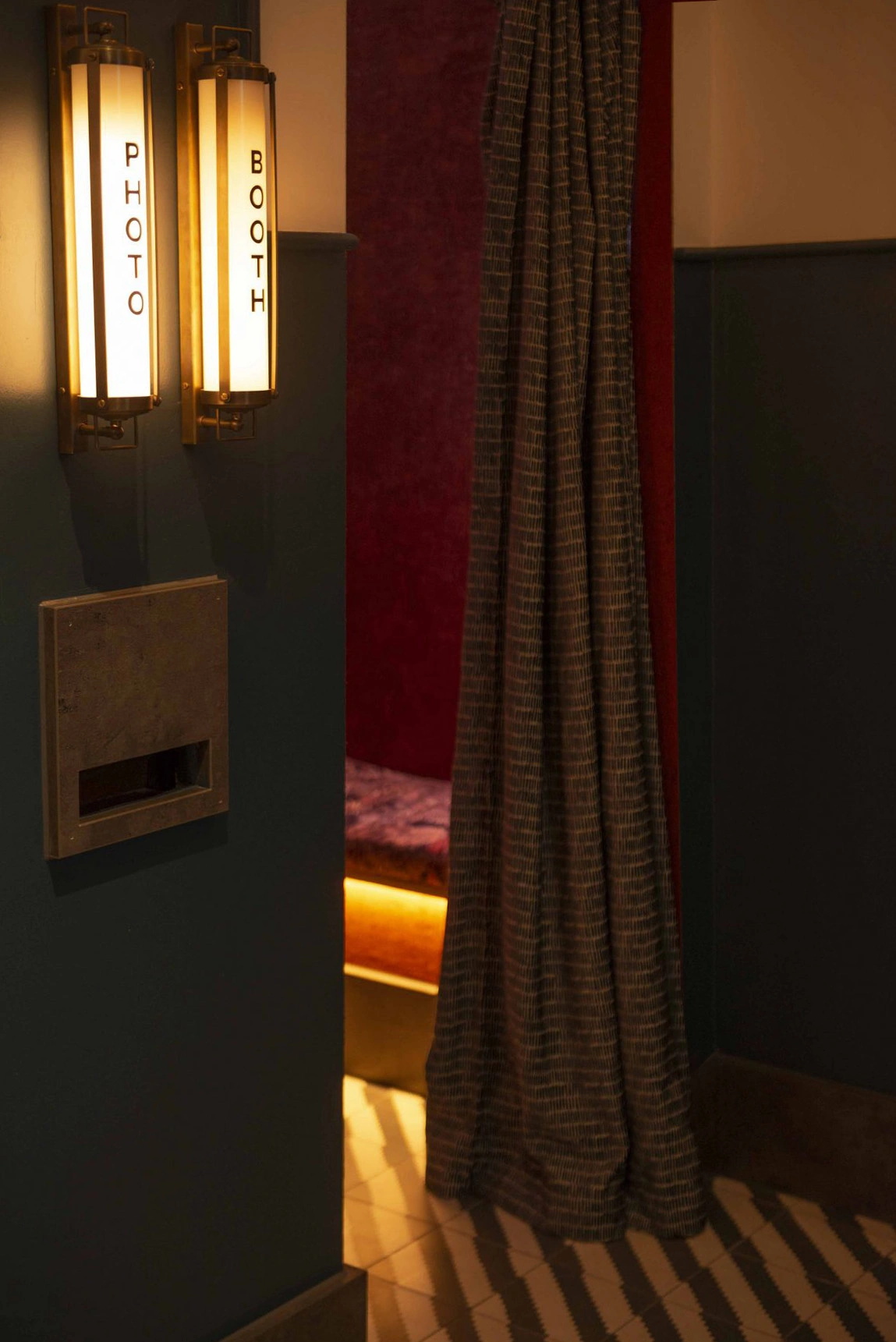
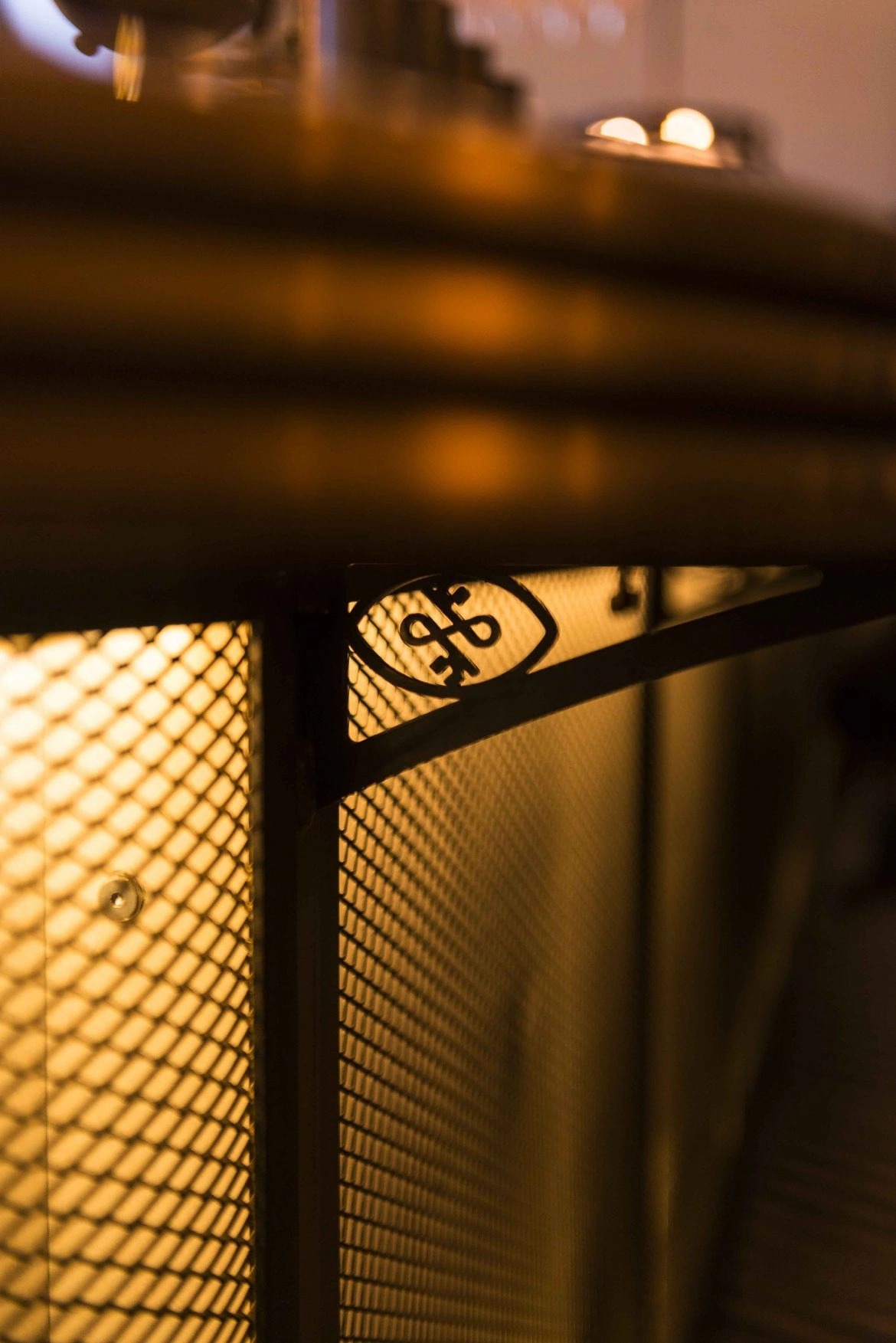
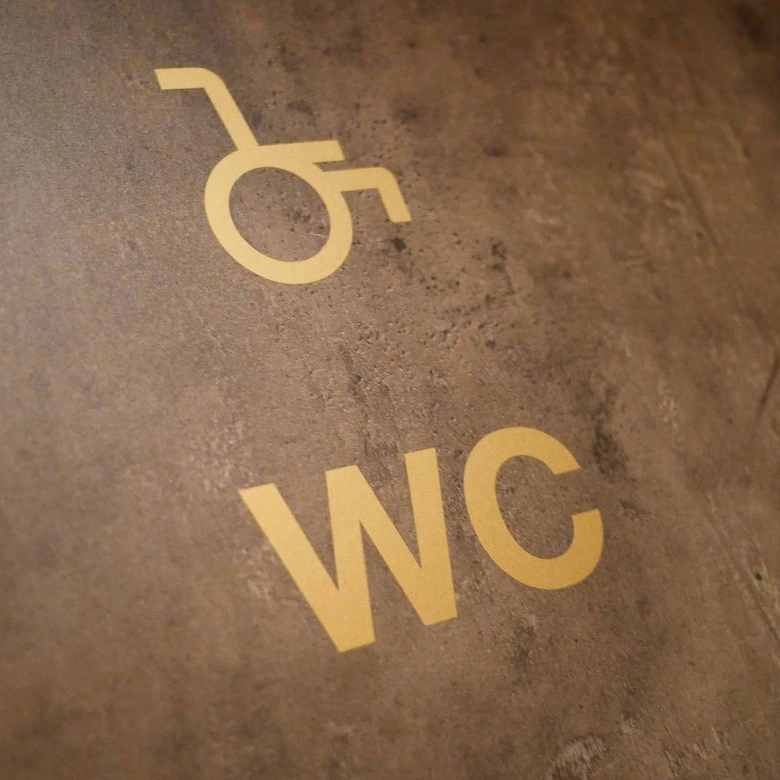
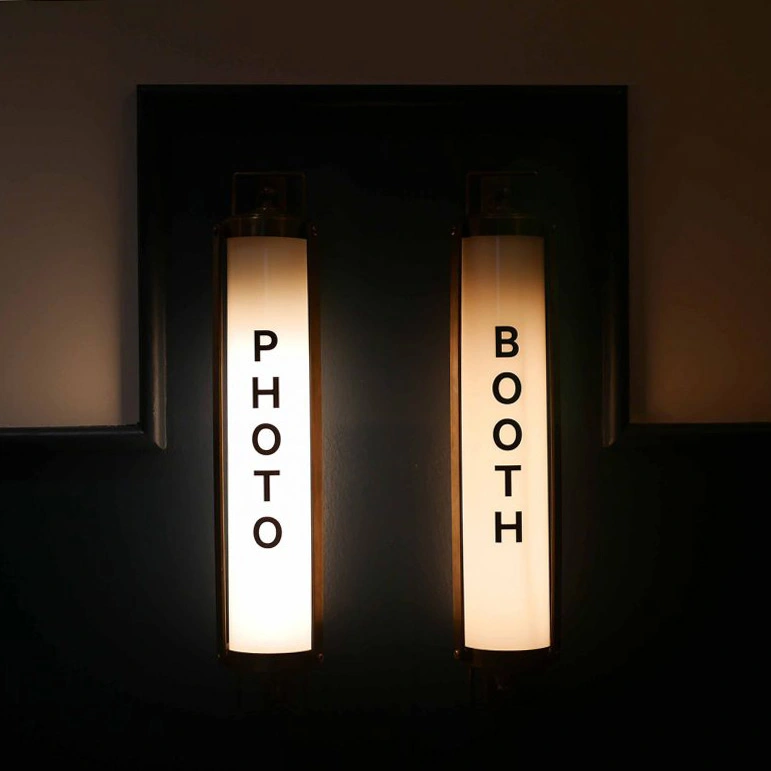
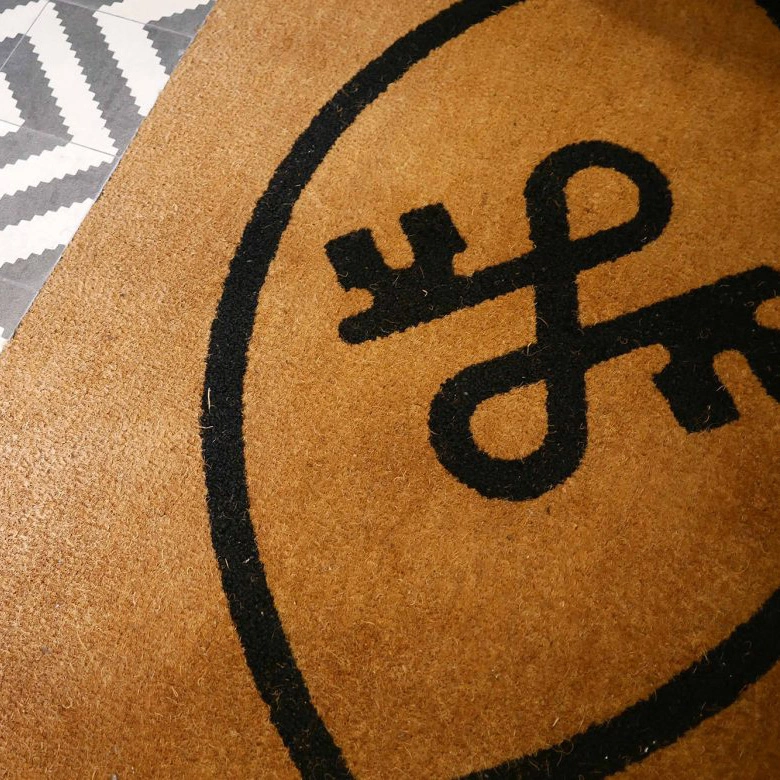
Where Brand Meets Interior
As always, we weaved the brand into the fabric of the space. From the glowing orange neon that presides over the bar to a multitude of signage and wayfinding moments, every detail was considered. Each bar stool is engraved with the Tivoli logo; the oversized coir mat at the entrance bears the brand motif. And throughout the venue, hidden flourishes reward the eagle-eyed — subtle nods for those who know where to look. A decorative blackened steel arch with a globe feature light leads the way to the bathrooms, via a retro-style photobooth where guests can snap a Tivoli memento before heading back to their seats.

COCKTAILS & DREAMS
The first thing which greets people on the first floor is a beautiful hero cocktail bar where five glamorous stools in a mix of antique brass, blackened steel and dark tropical patterned velvet run alongside the 9m long arabescatto marble topped bar with heavy antique brass bullnose edging and a softly lit mesh front. The exposed bar storage is crafted from a mix of rich toned timber, antique mirror, blackened metal and brass joinery. Floor-to-ceiling pillars decorated with crackle-glazed artisan tiles and contrasting paintwork are dotted throughout the space. The columns directly by the bar are wrapped by circular drinks tables and upholstered bar stools.
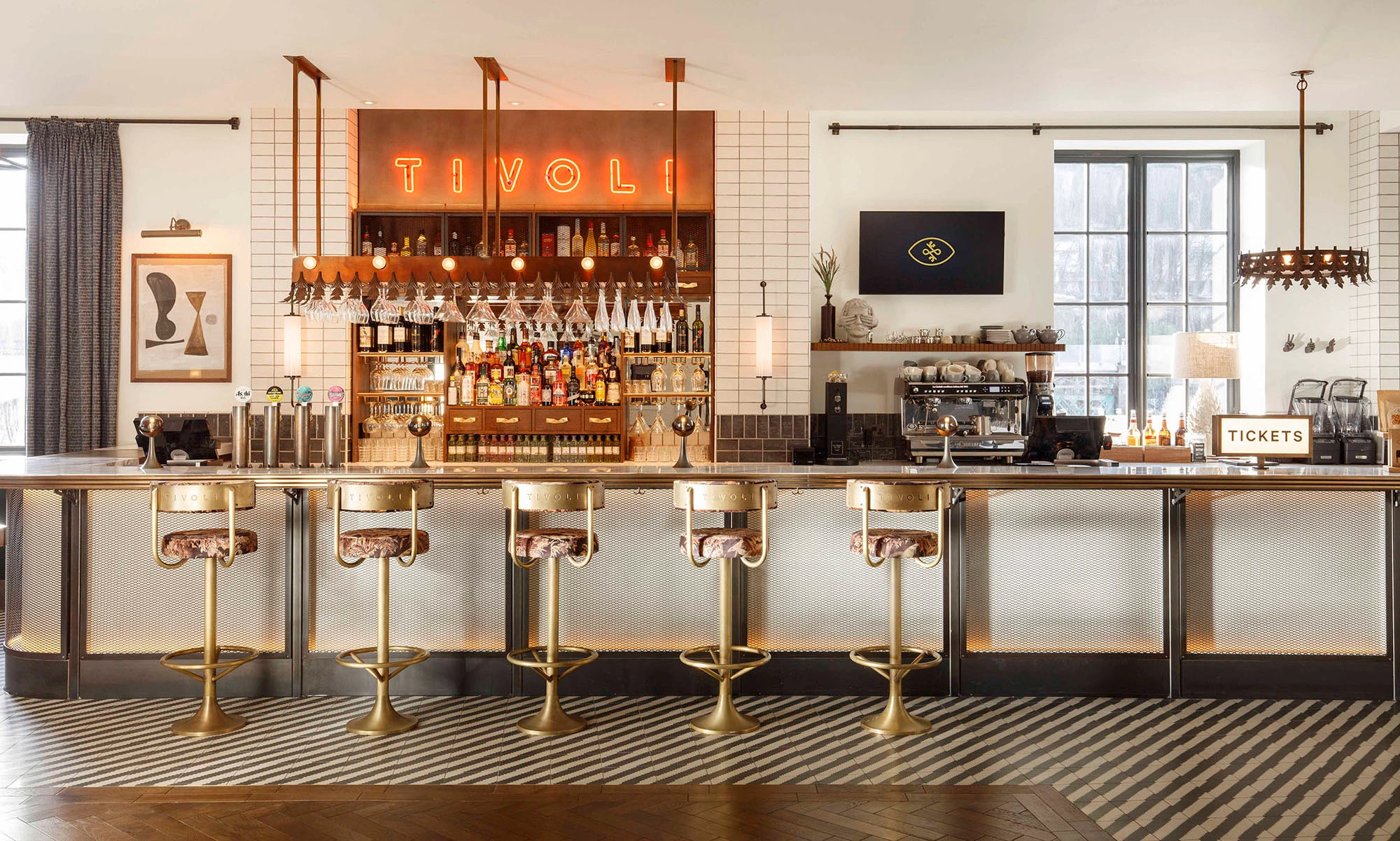
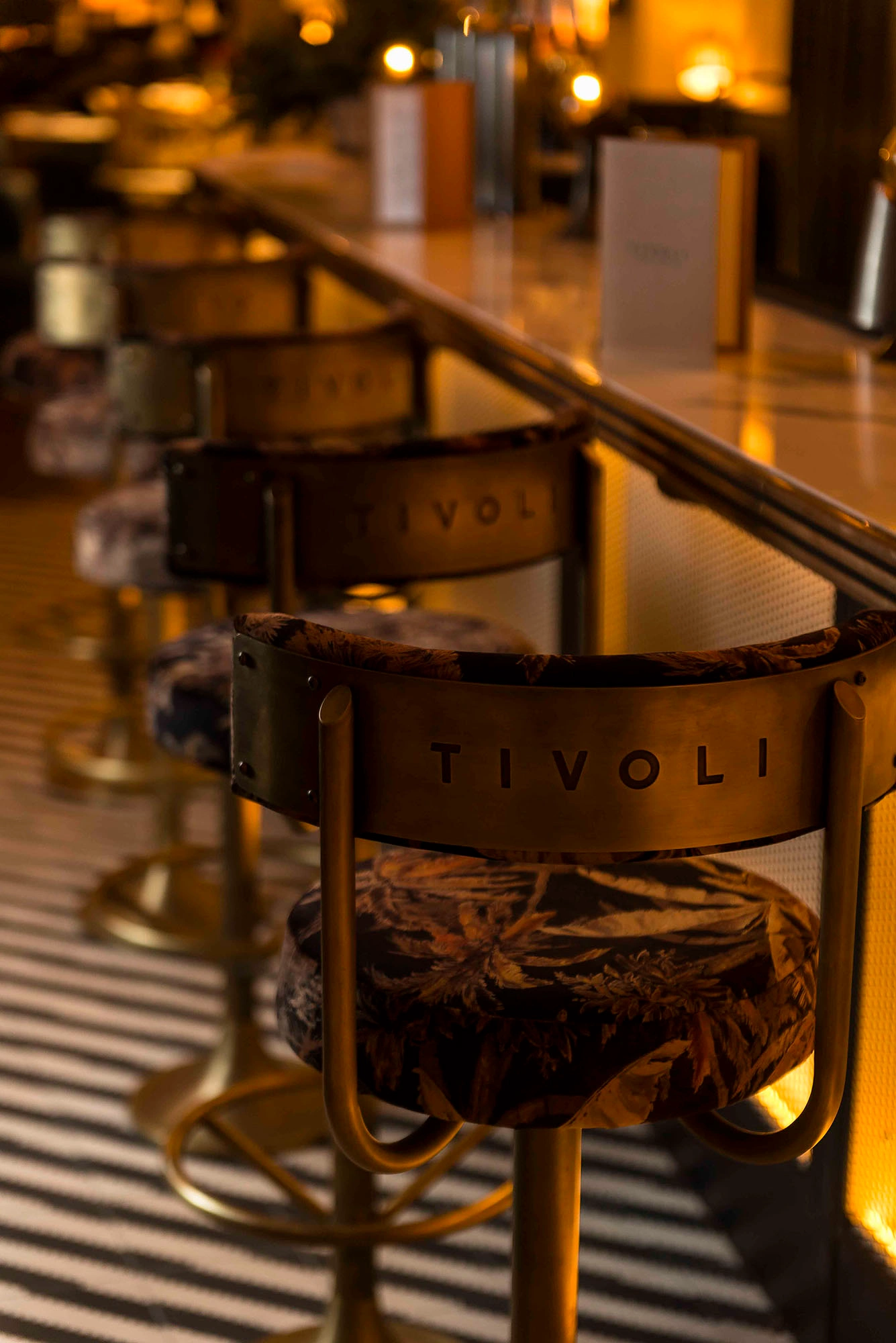
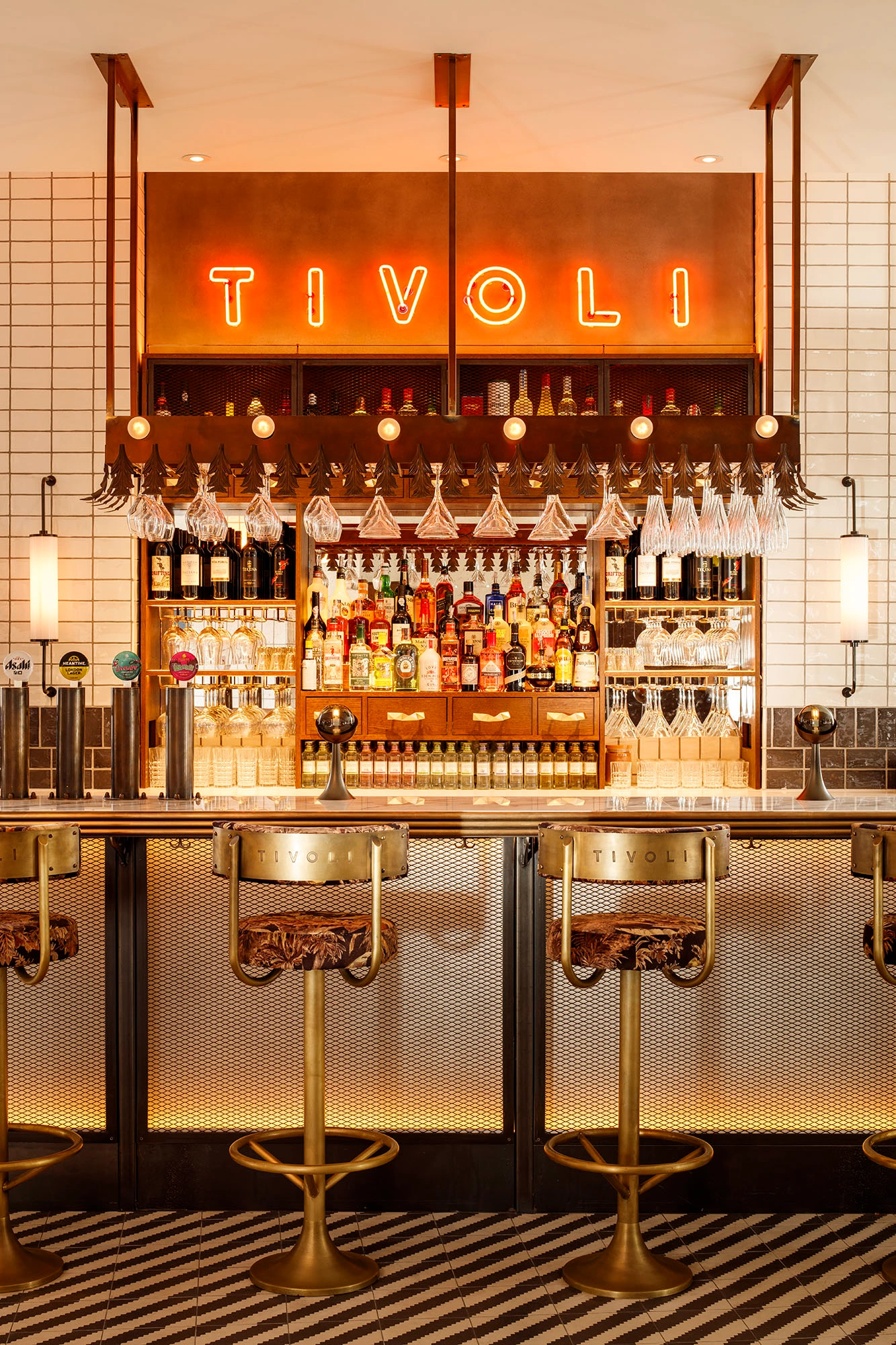
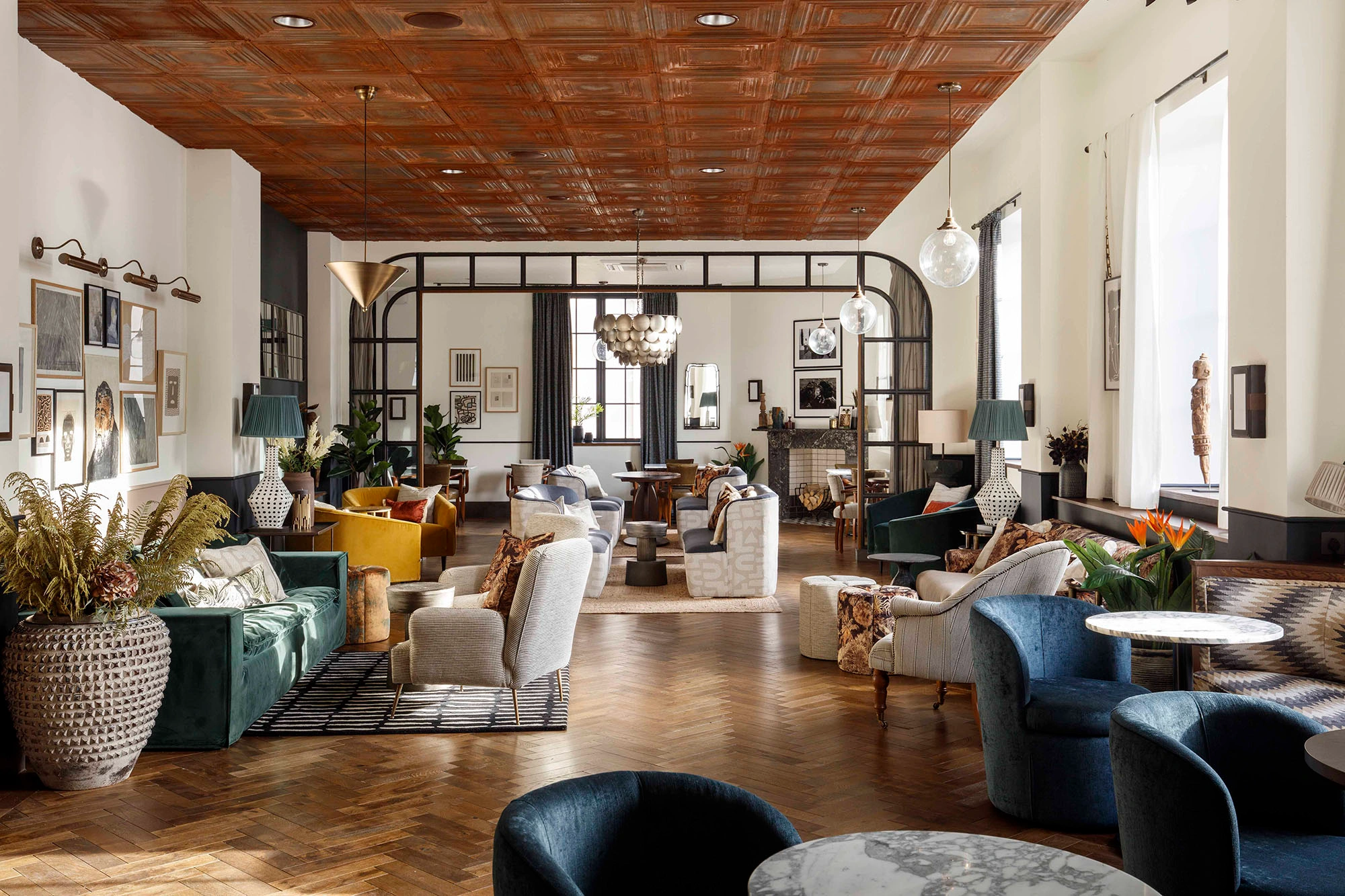
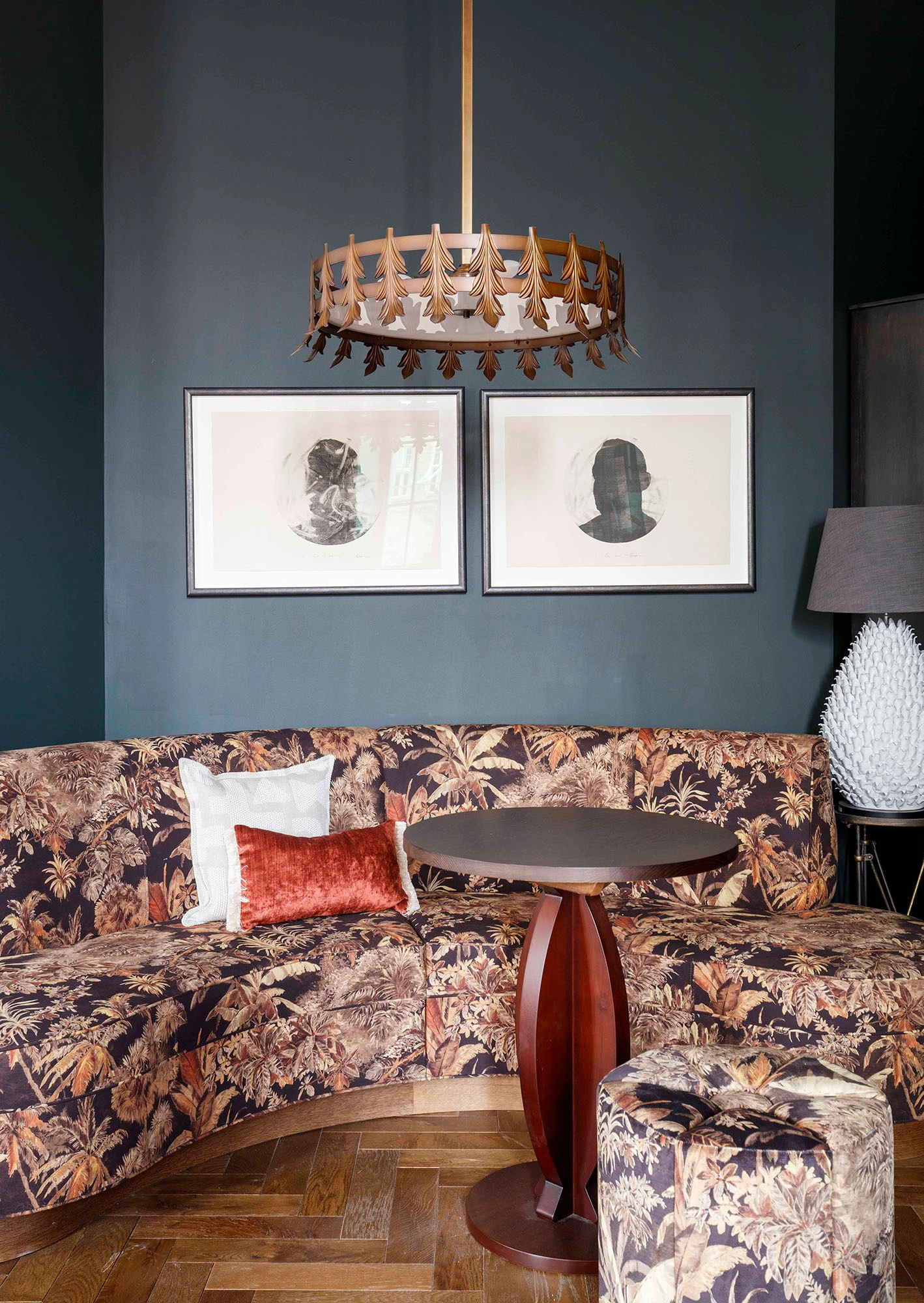
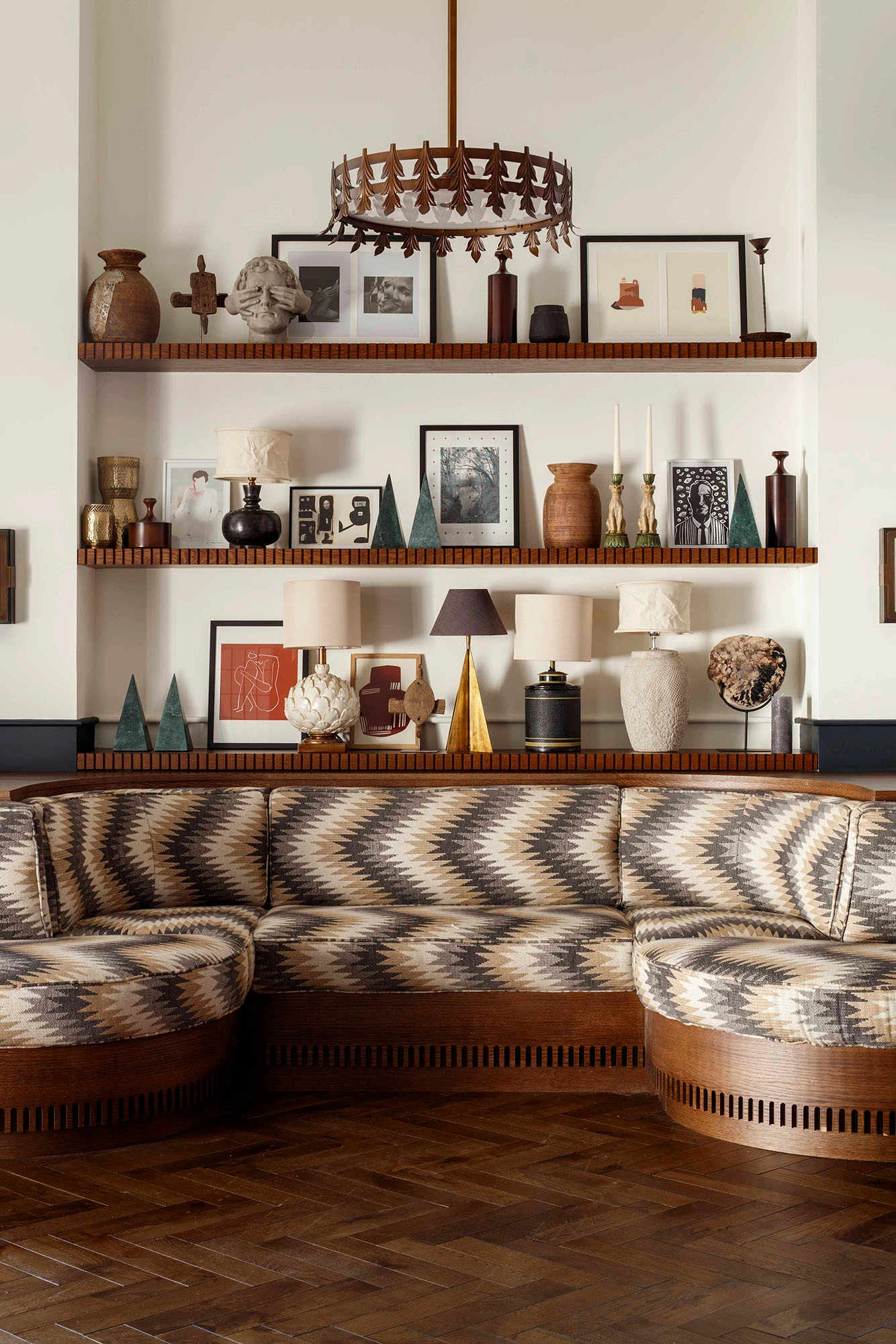
lounge lizarding
Beyond the bar is a beautiful, inviting and relaxed café-bar and lounge area. Seating and tables within the lounge include an eclectic mix of leather, wood and upholstered dining chairs and chunky tables in wood, antique brass, marble and zinc. The intimate, curved shaped sofa is perfect for romantic couples. At the far end of the space is a more formal restaurant area, the entrance is framed by curved urban-deco crittal screens that divide the space without closing it off completely. Behind the screens are full height drapes, allowing for more intimate private dining and events, giving maximum flexibility for either VIP or public use.

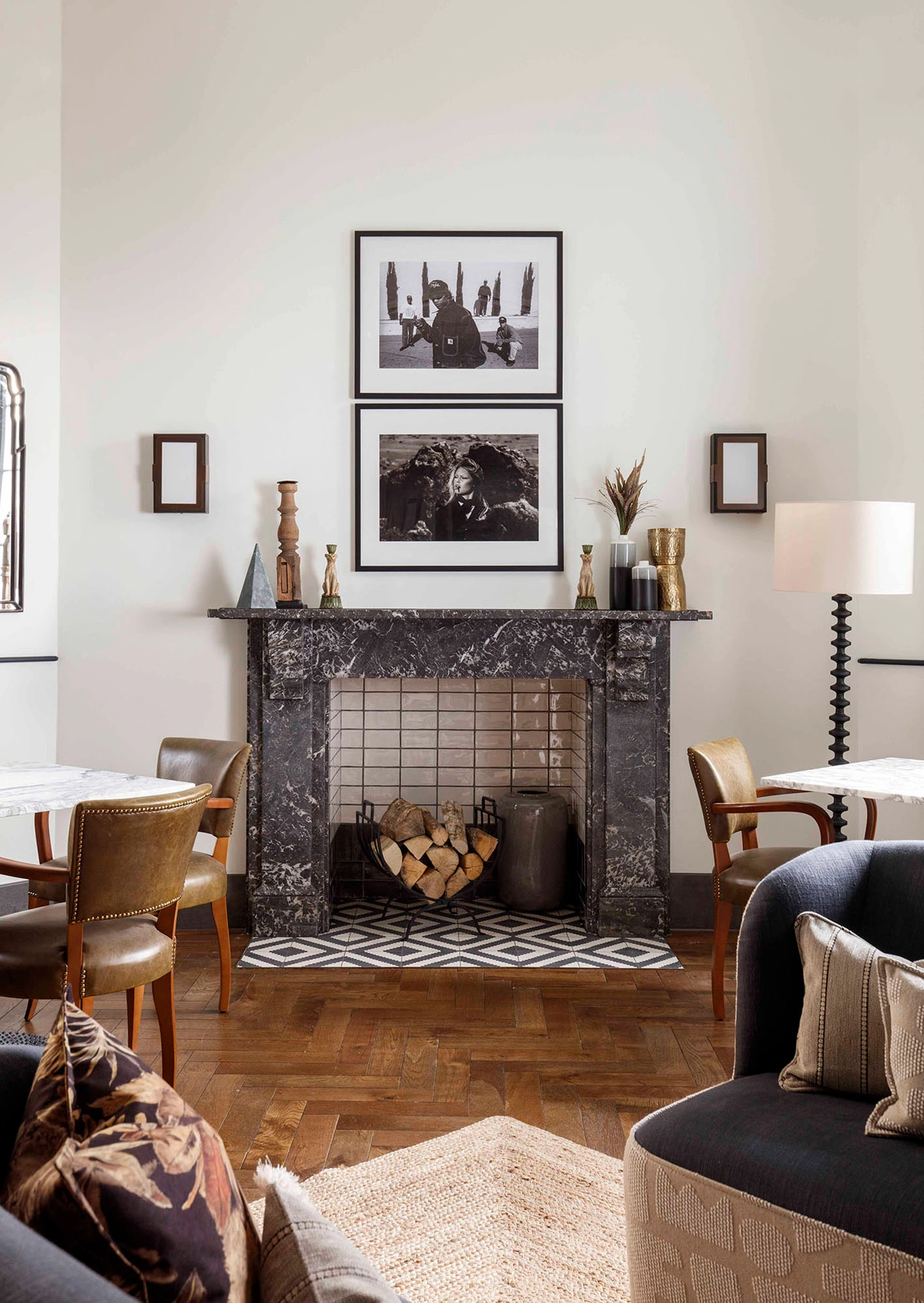
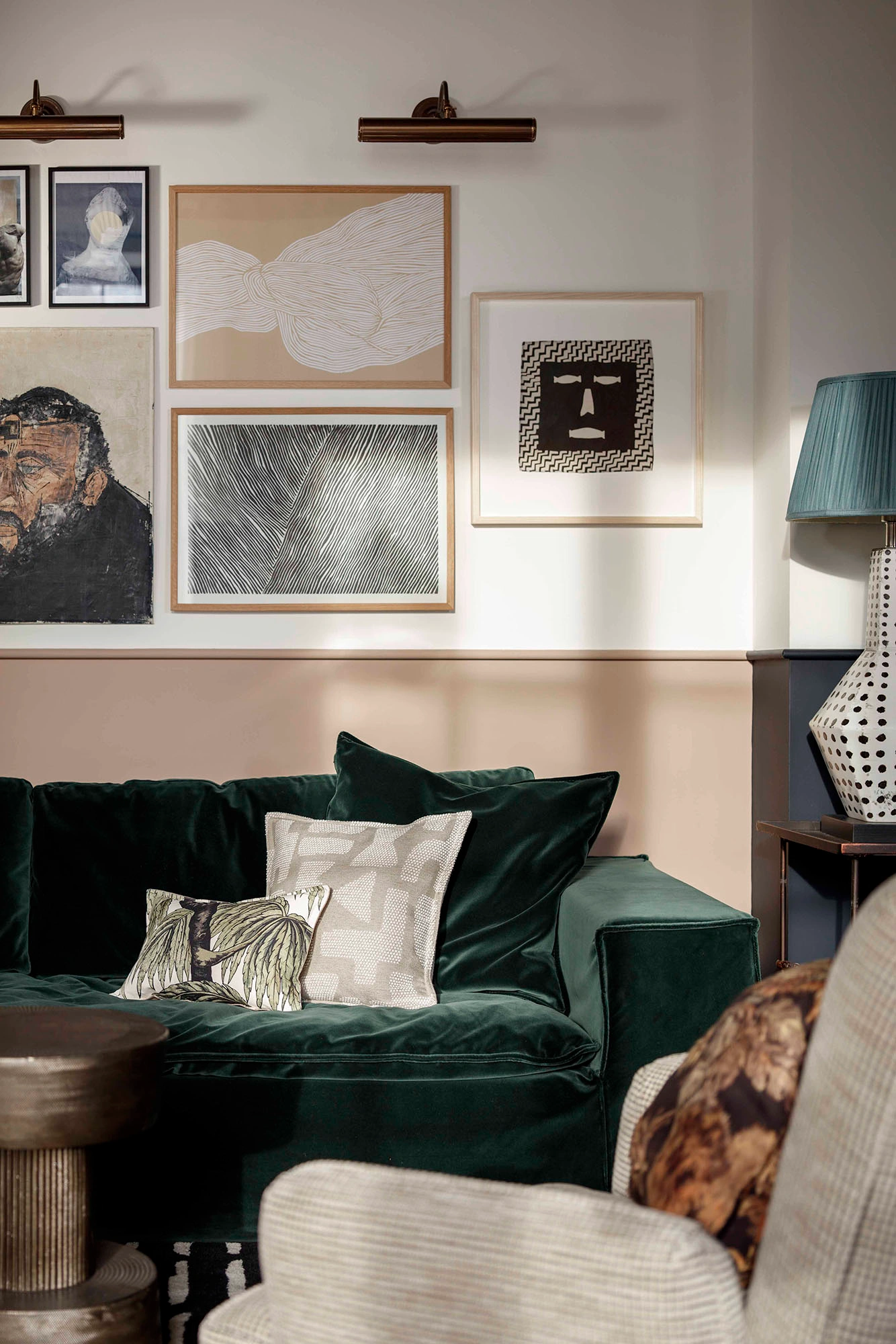
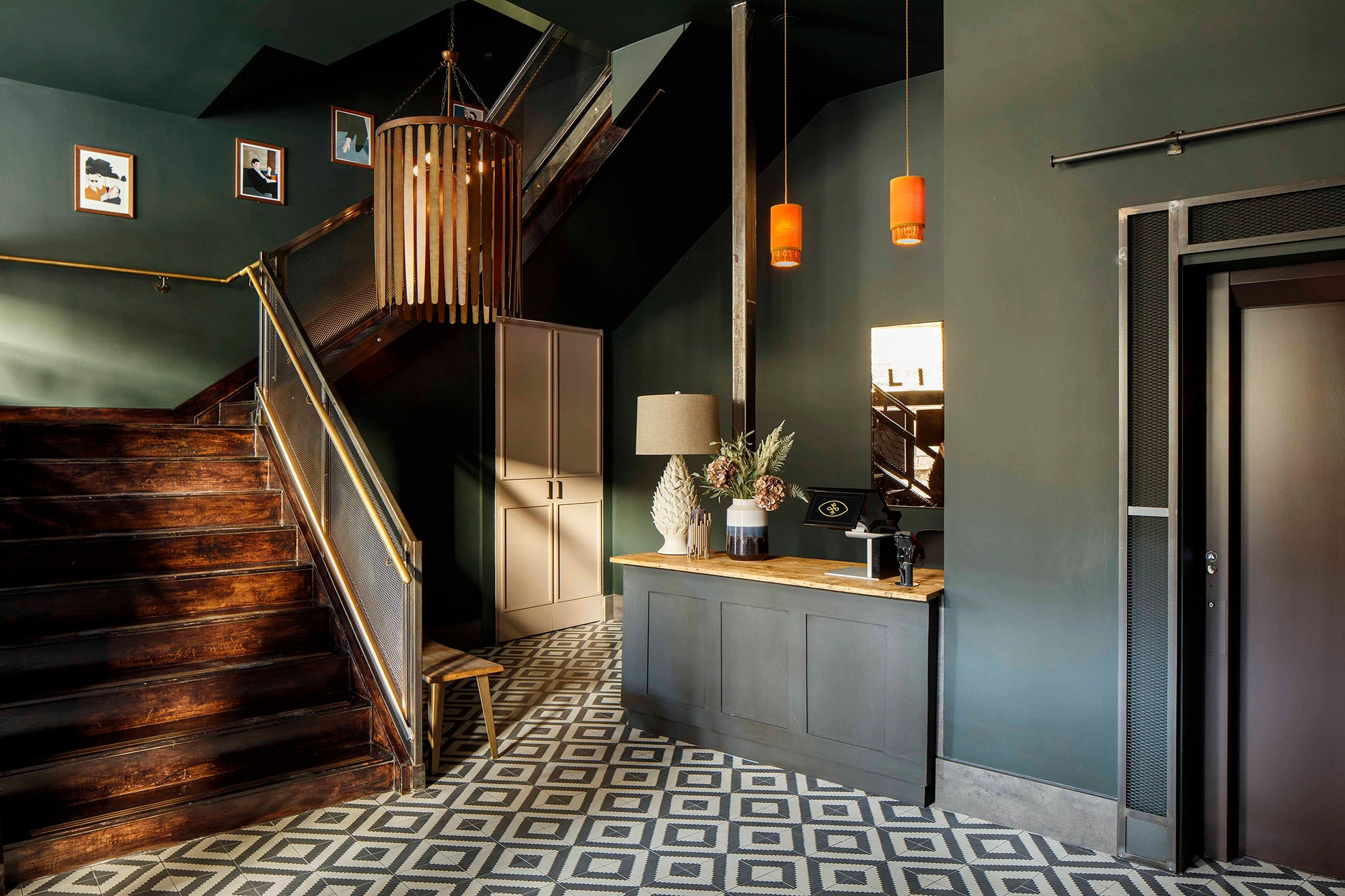
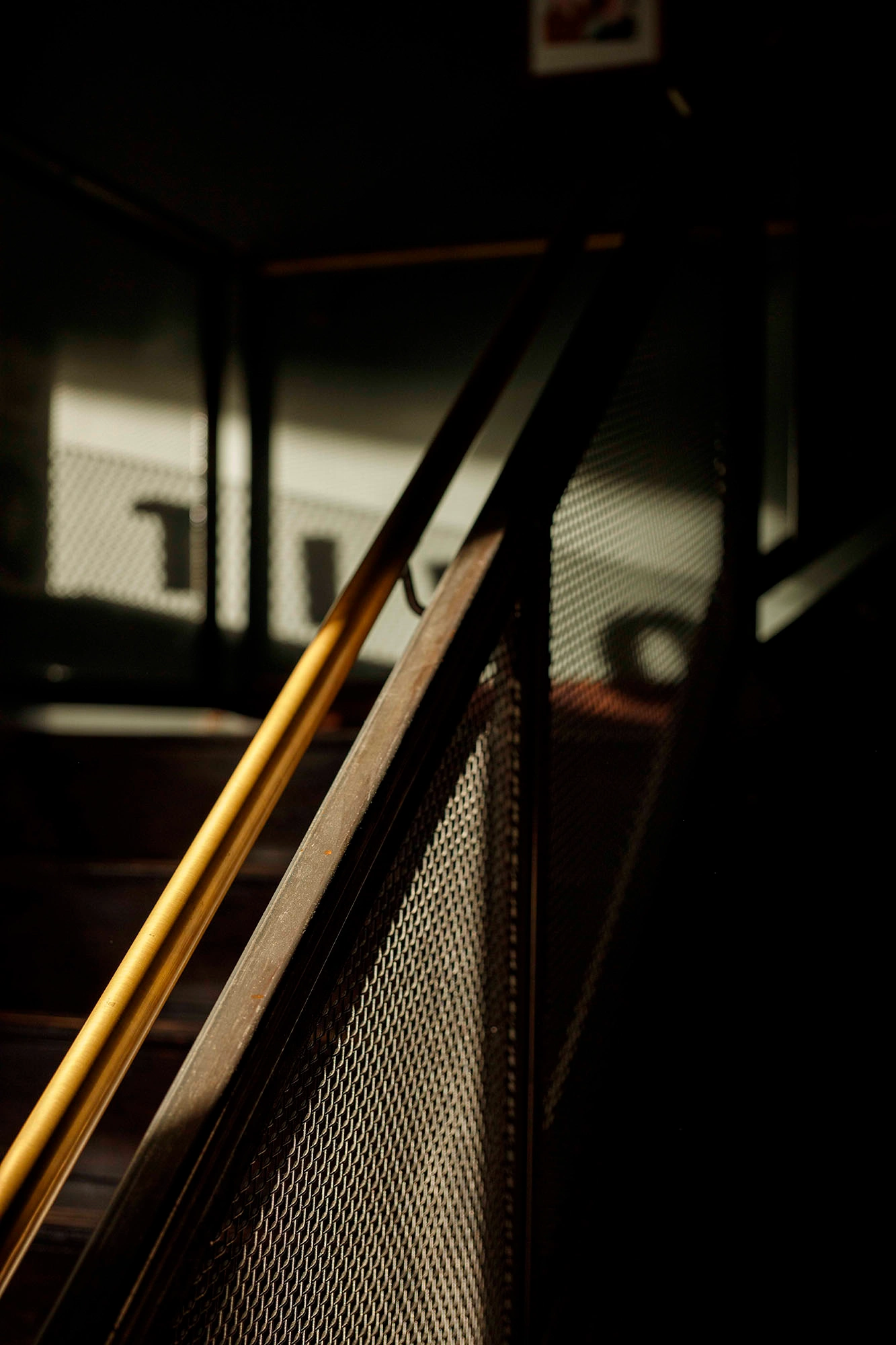
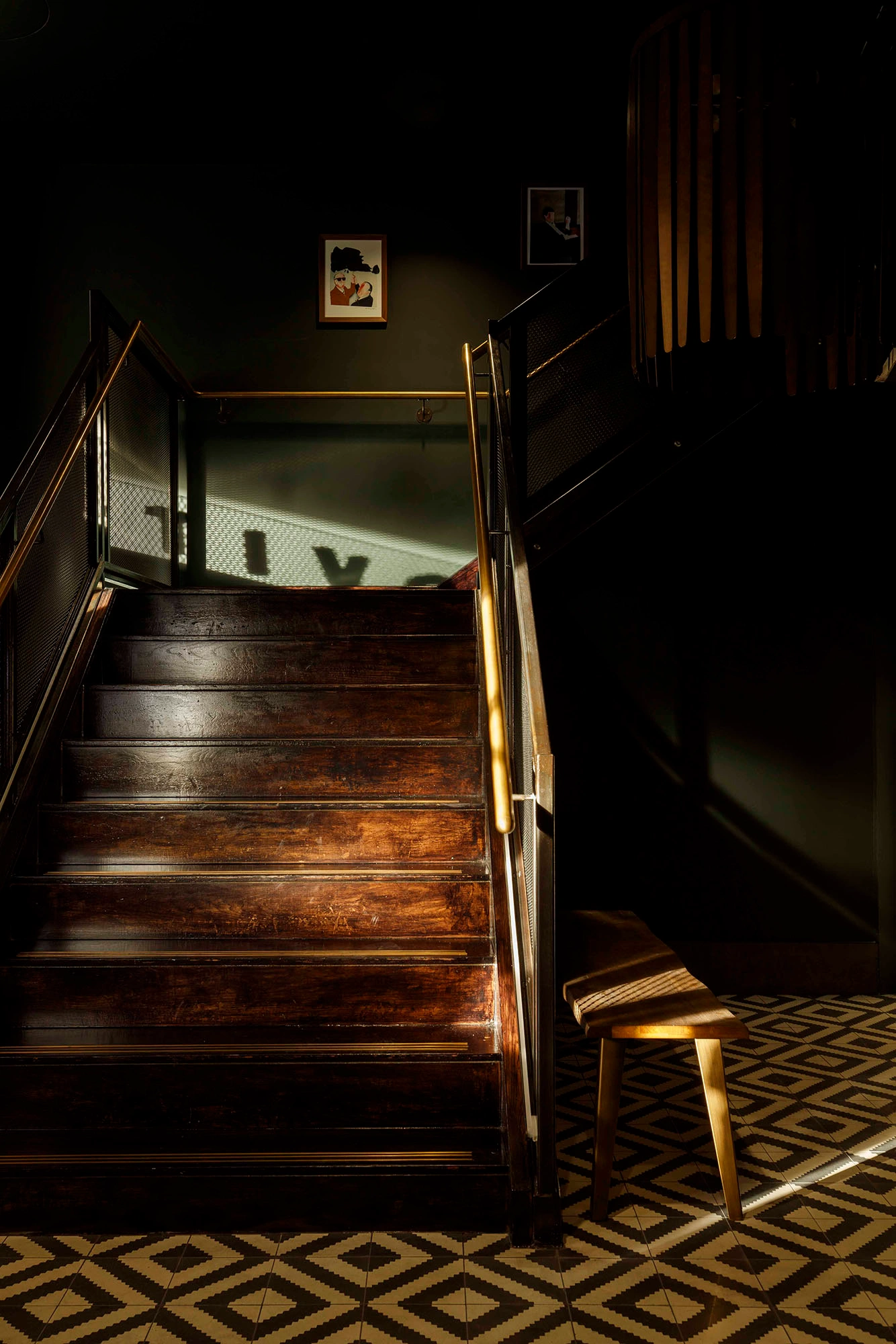
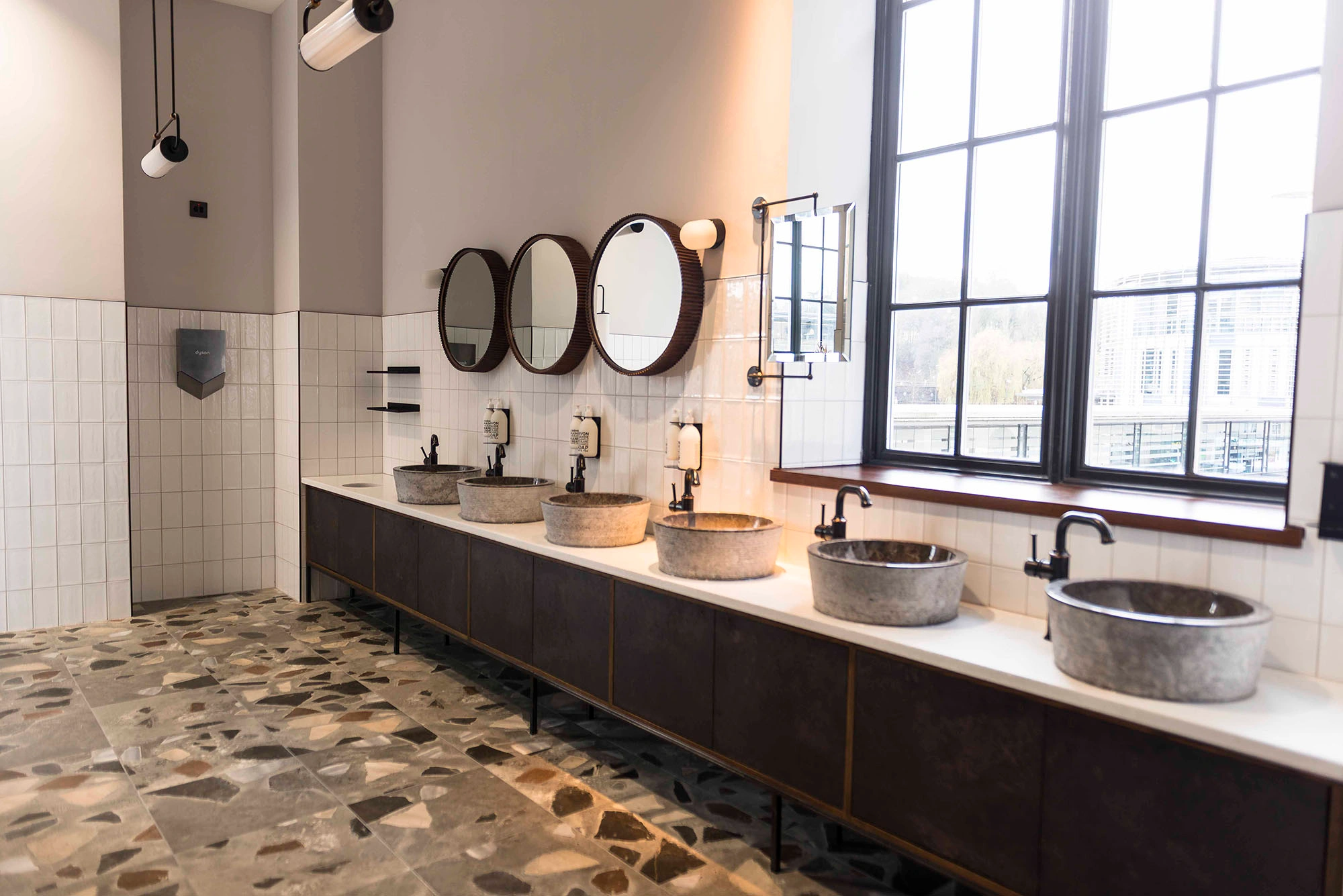
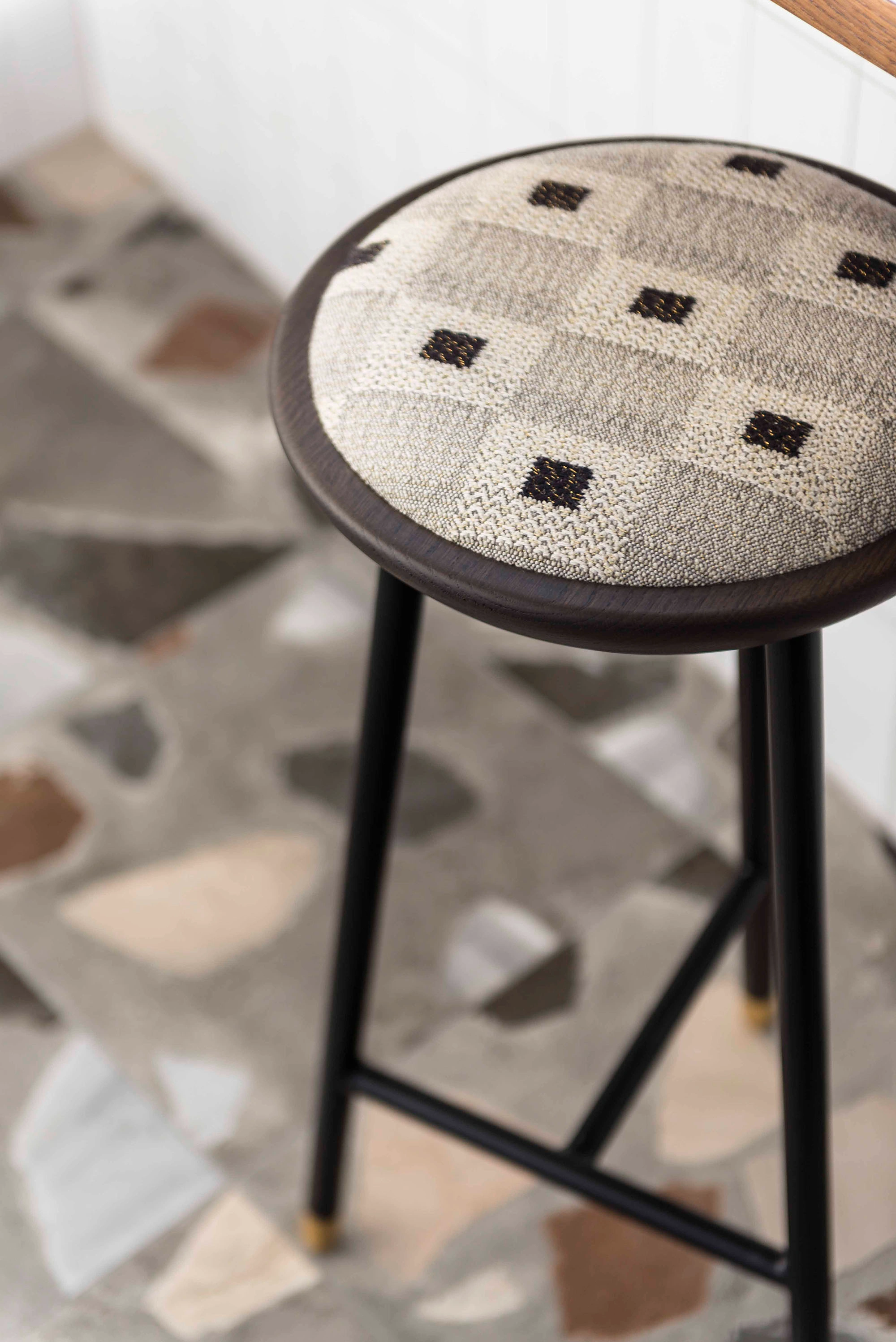

A Dramatic Prelude
A cinematic shopfront with illuminated projecting signs and a giant screen playing animated idents and the occasional trailer. It’s clear from the moment you arrive that you’re in for something special — a bold, theatrical façade that sets the tone. The promise begins outside, and we like to think the interiors more than deliver.
